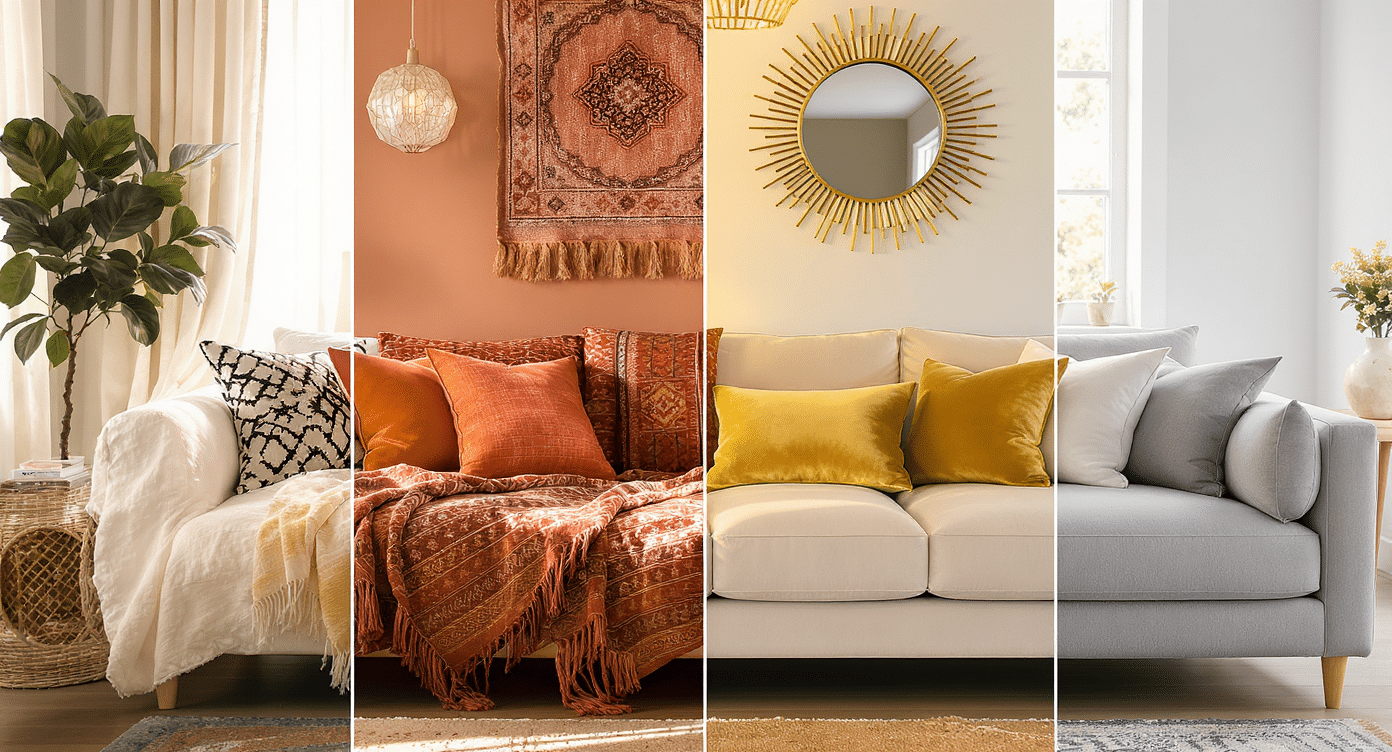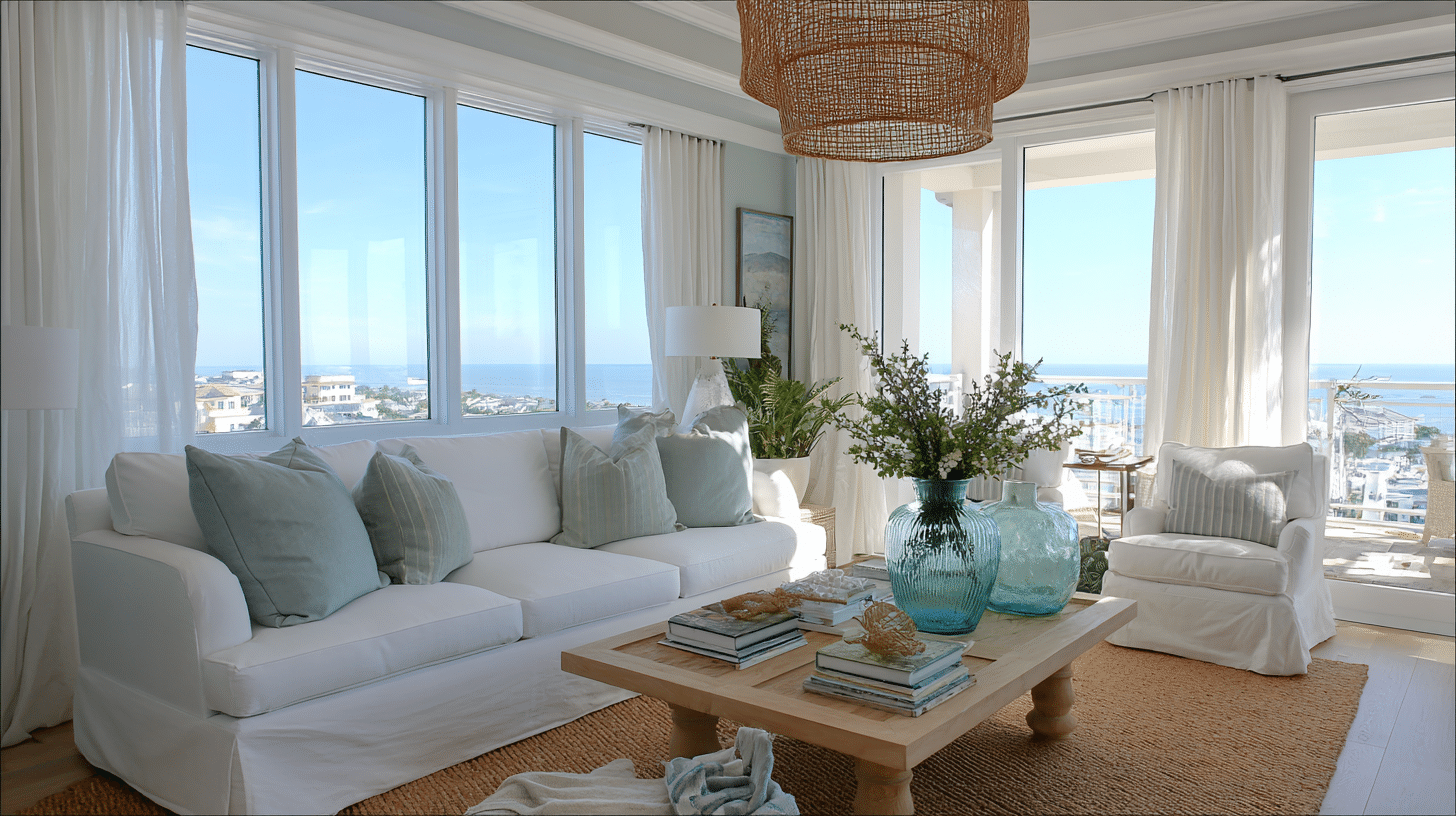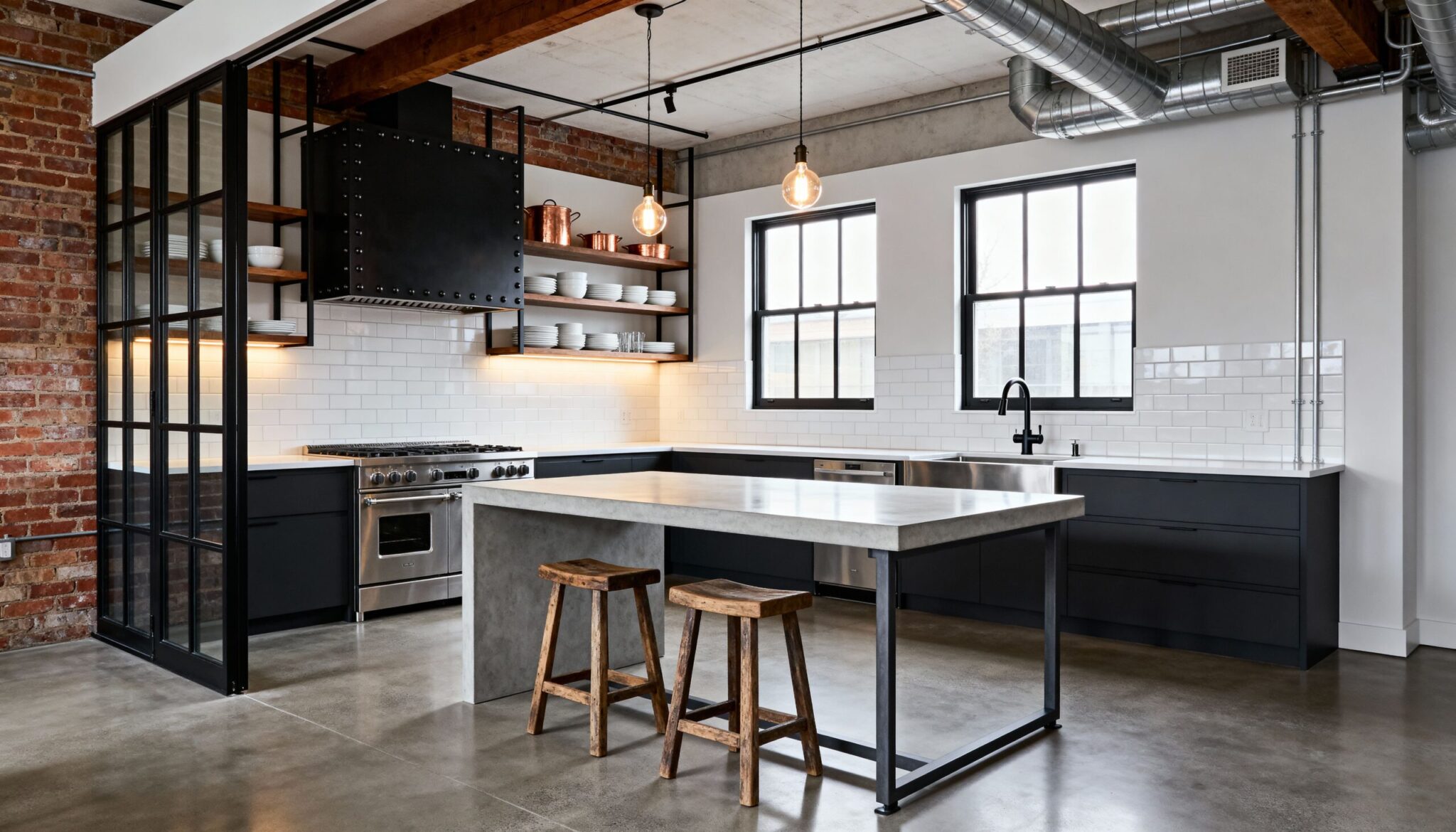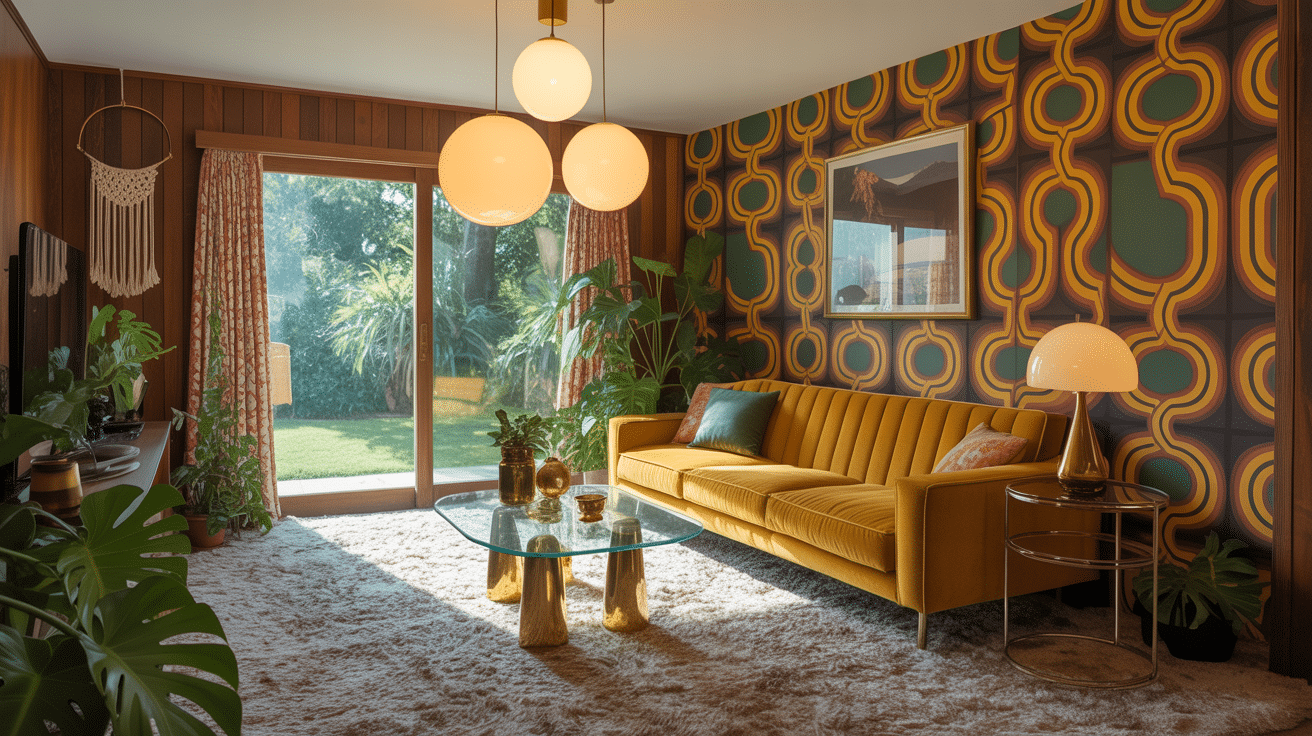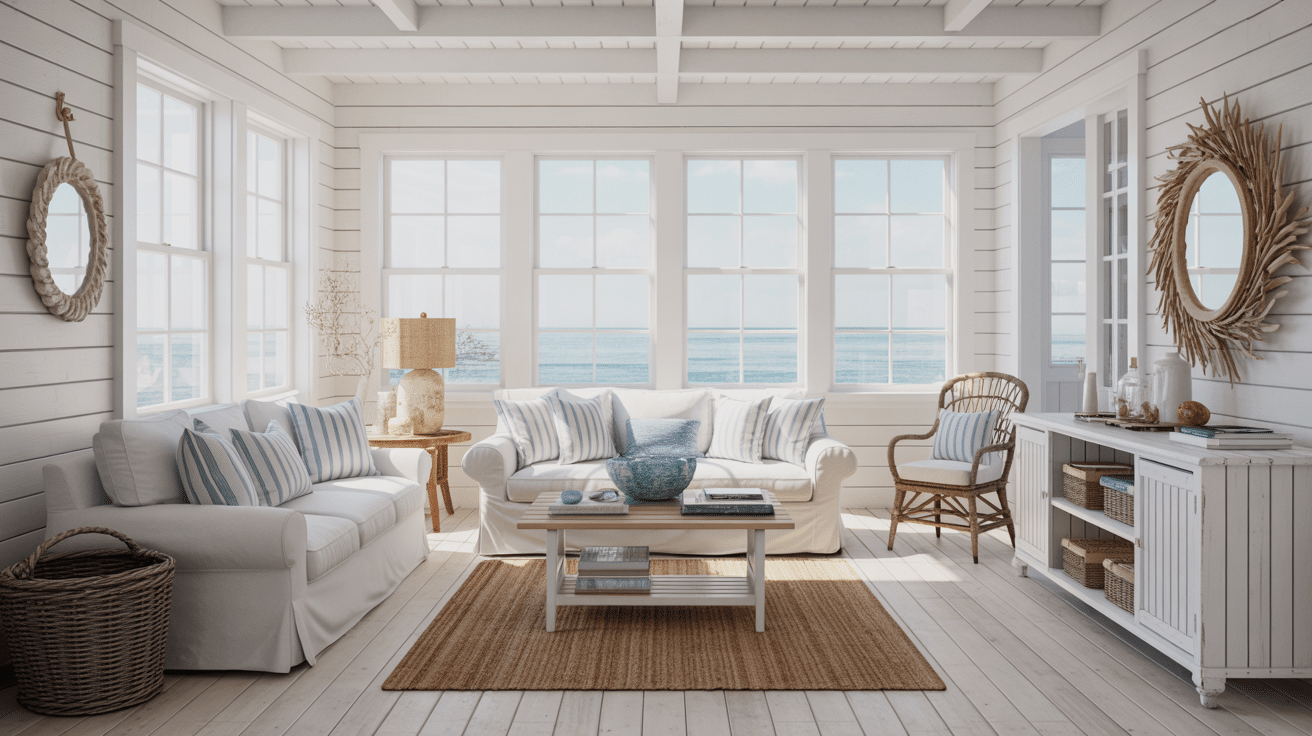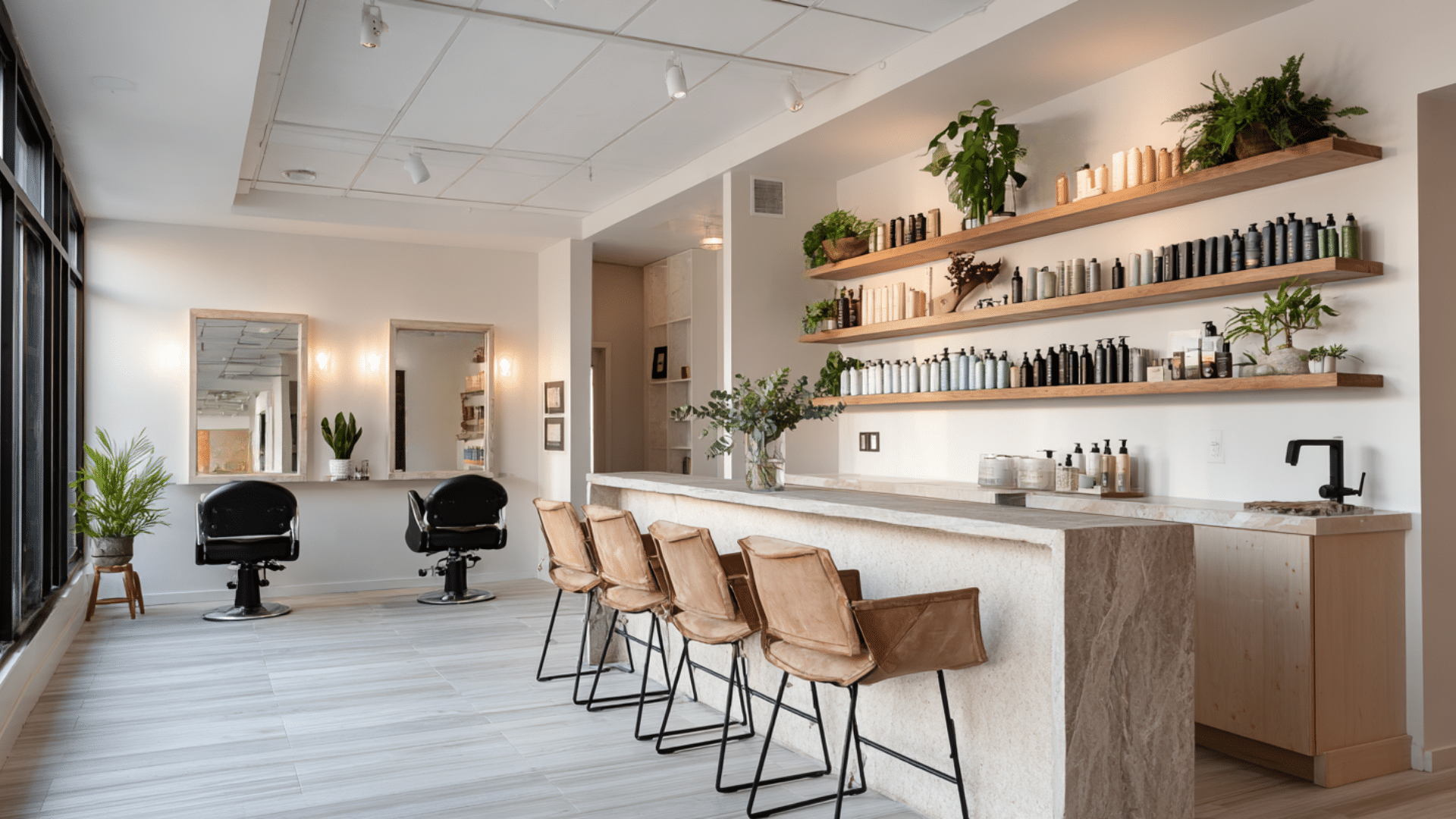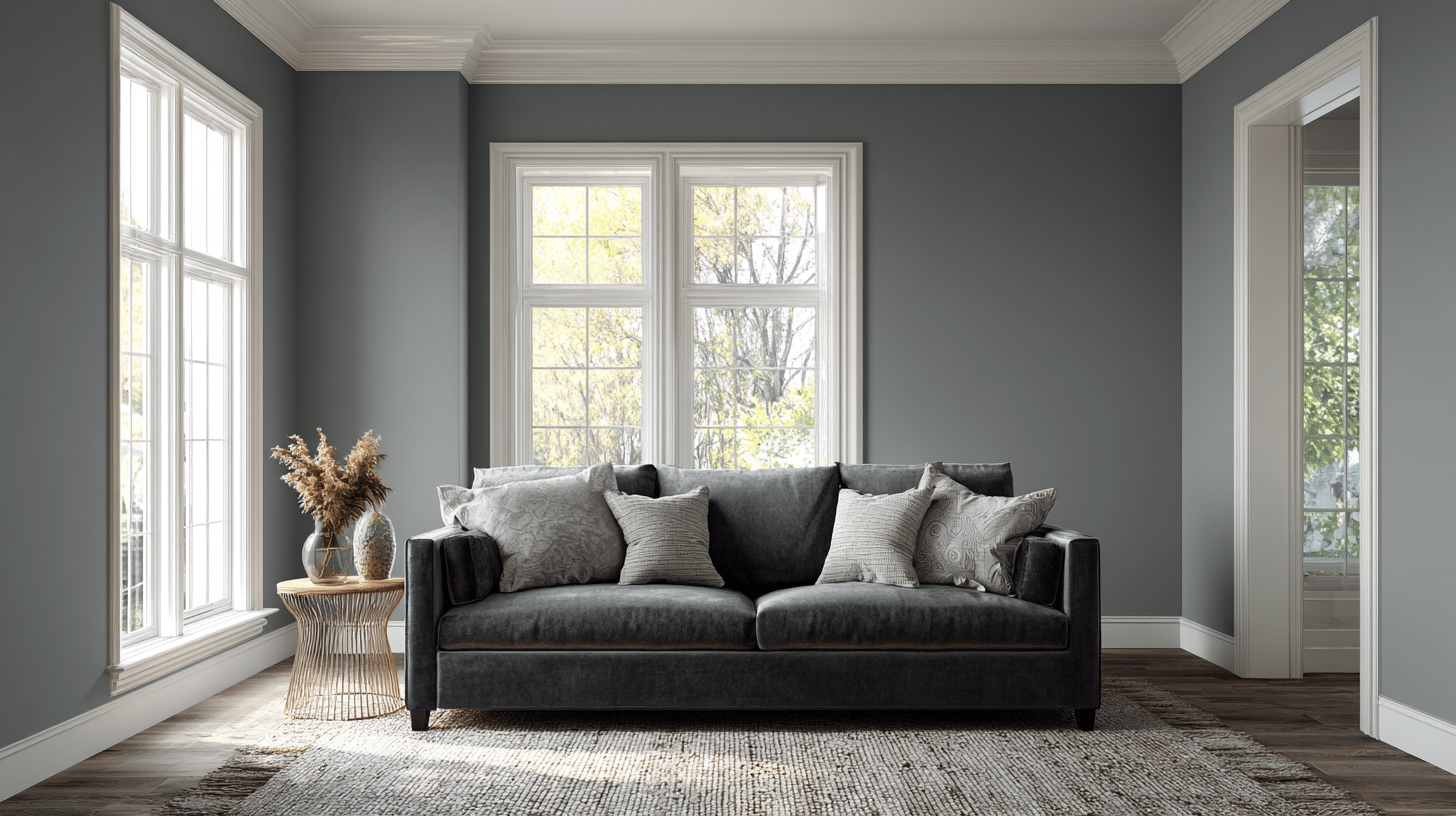An eclectic living room captures creativity and individuality through a thoughtful blend of colors, textures, and design influences.
Every detail, from statement furniture to subtle accents, reflects personal taste without following strict decor rules.
This style thrives on contrast and balance, combining vintage treasures with modern touches to create a visually mesmerizing environment.
With layered patterns and balanced arrangements, it presents limitless ways to express charm and style.
It goes beyond decoration to reflect personality, making each space feel effortlessly stylish, inviting, and full of life.
Chic Eclectic Living Room Ideas to Inspire Your Next Makeover
Giving your living room an electric look means breaking the rules in the best way possible.
The following ideas demonstrate how to blend styles, experiment with colors, and arrange furniture to create a space that feels uniquely yours.
Mixing Styles & Eras
1. Pair Mid-Century Modern with Industrial Elements
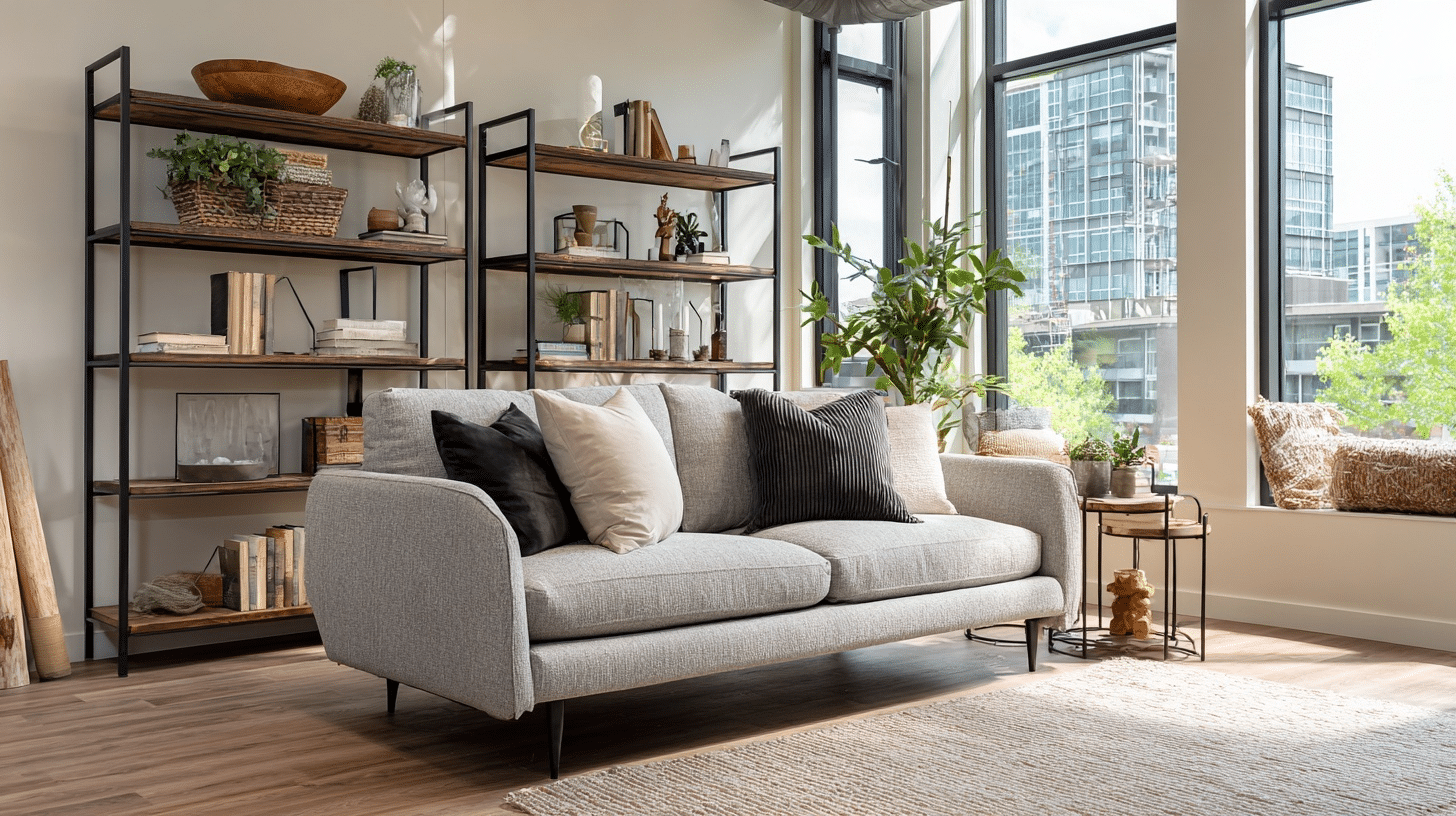
Combine a sleek mid-century sofa with metal shelving units for a modern look. The clean lines of vintage furniture contrast beautifully with raw industrial finishes. This mix adds depth without cluttering the space.
2. Blend Traditional Furniture with Modern Art
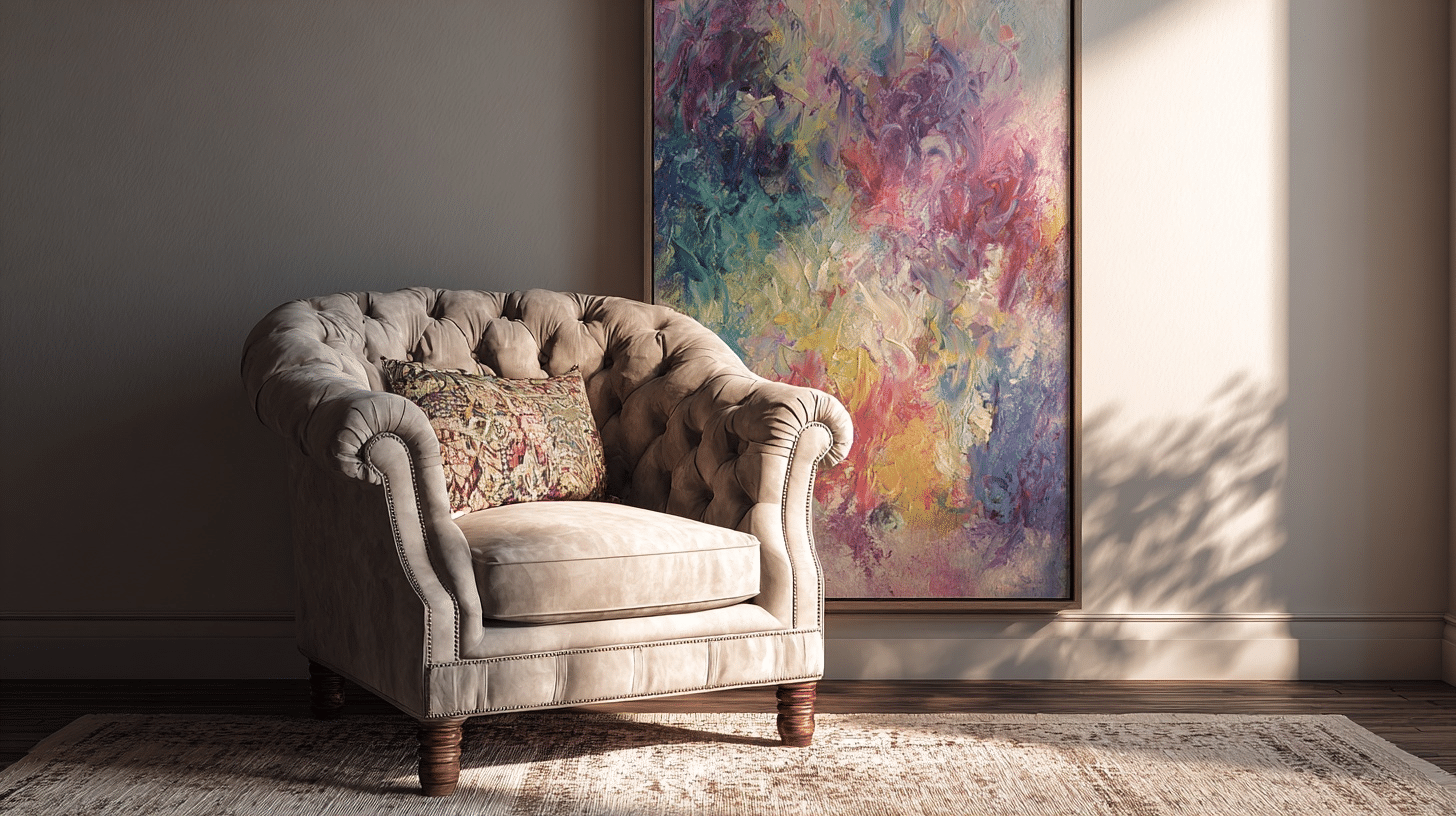
Place a classic tufted armchair under modern abstract paintings. The formality of traditional pieces softens when paired with bold, current artwork. This creates an interesting visual conversation.
3. Mix Bohemian Textiles with Minimalist Furniture
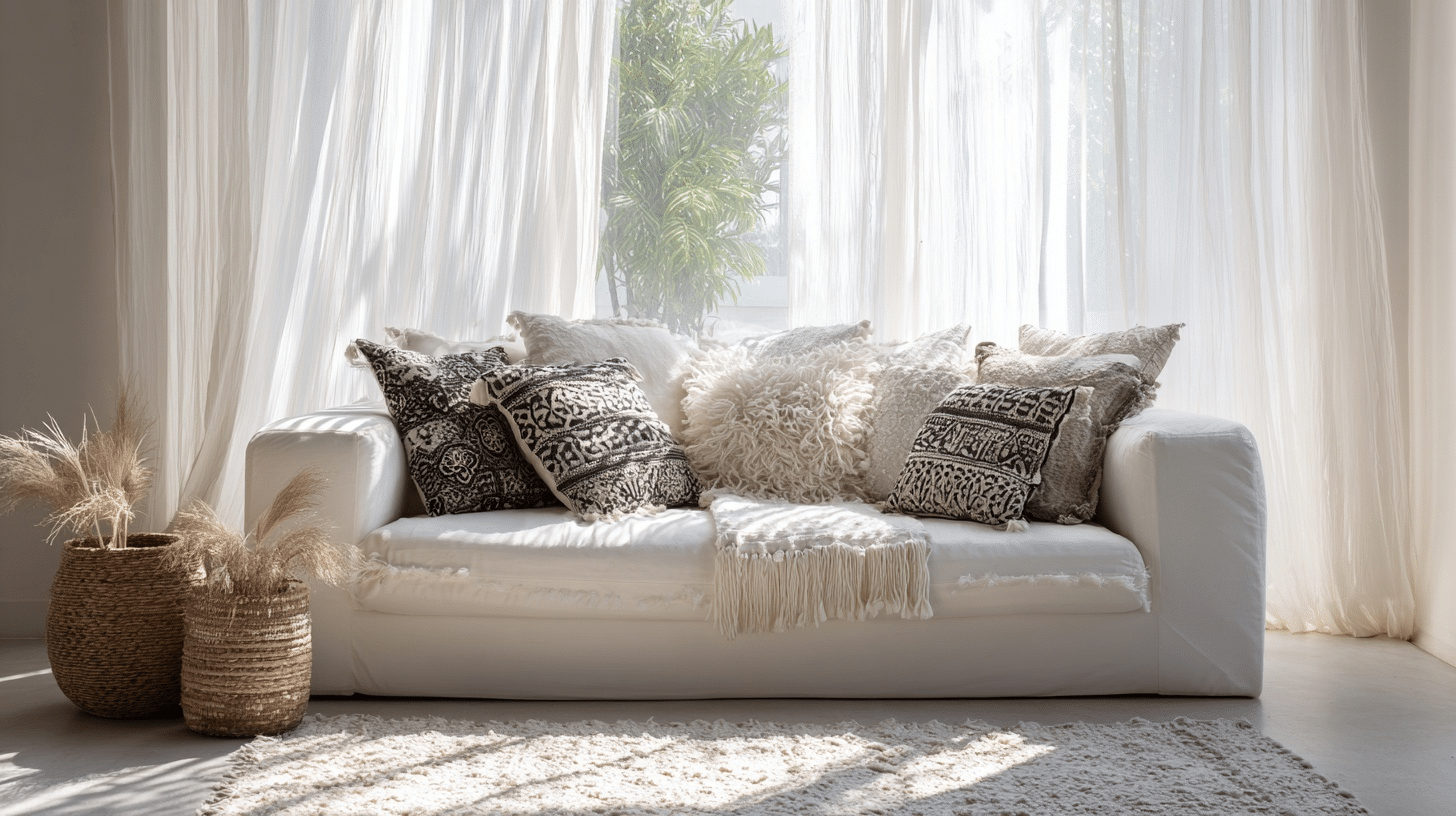
Layer patterned throws and cushions on simple, clean-lined sofas. The minimal base lets colorful boho textiles shine. This balance prevents the room from feeling too busy.
4. Combine Vintage Finds with Modern Lighting
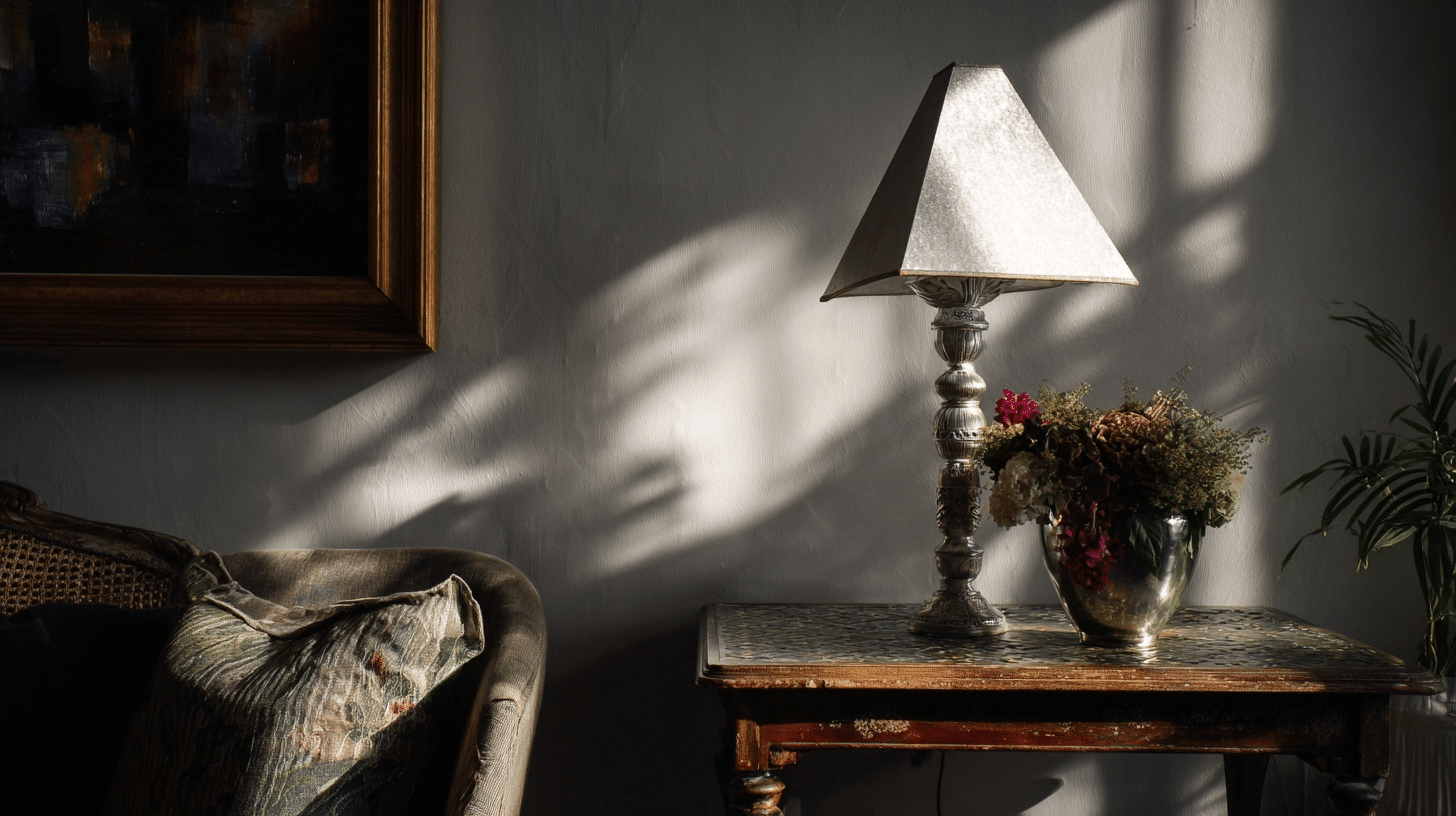
Use antique side tables or cabinets with modern pendant lights or floor lamps. The old pieces gain new life under modern lighting. This contrast highlights both elements.
5. Merge Natural Wood with Sleek Metal Accents
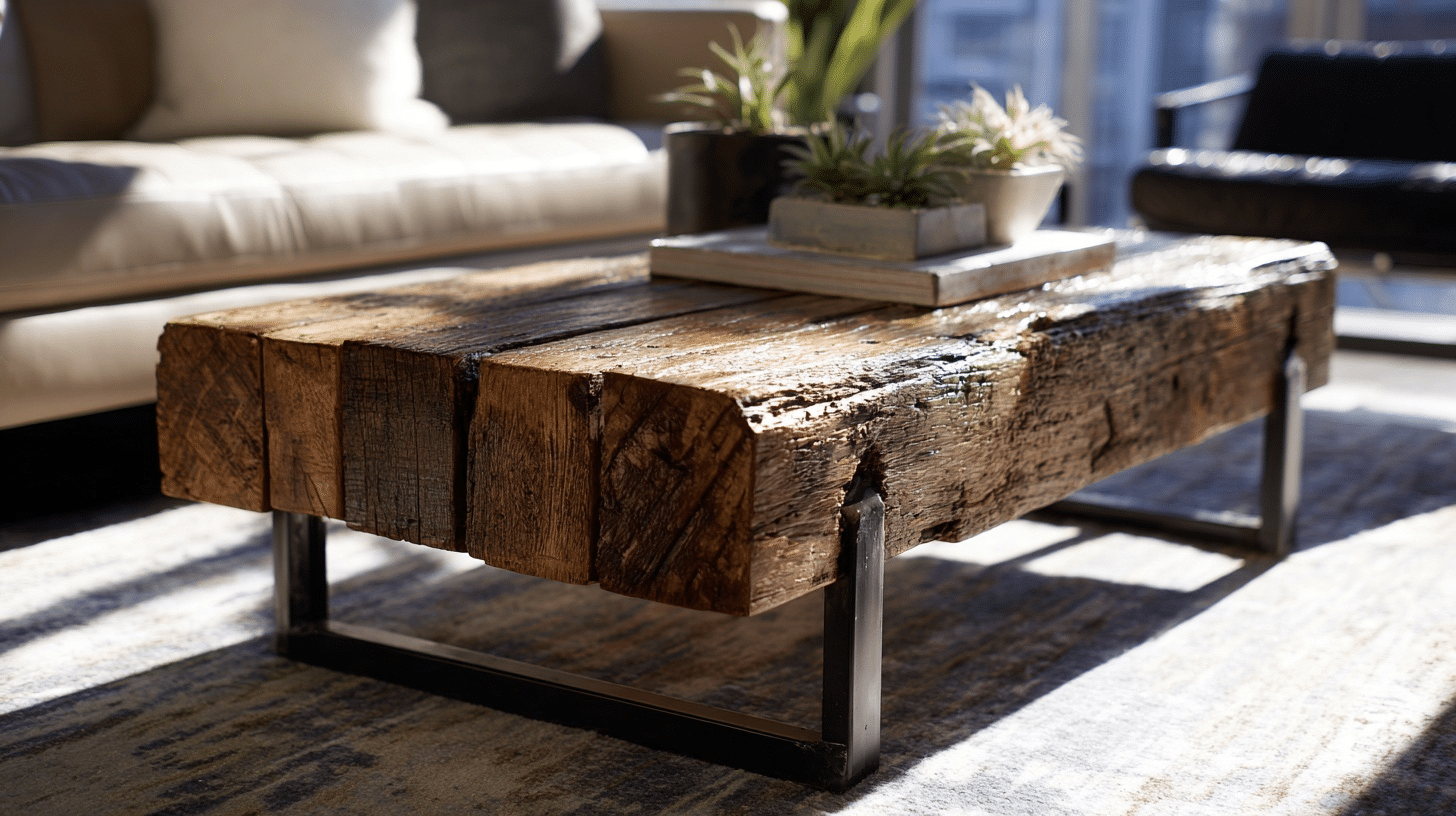
Add metal coffee tables or side tables to rooms with reclaimed wood beams or furniture. The scent of wood balances the coolness of metal. Together, they create a grounded yet polished look.
6. Blend Art Deco Glamour with Casual Comfort
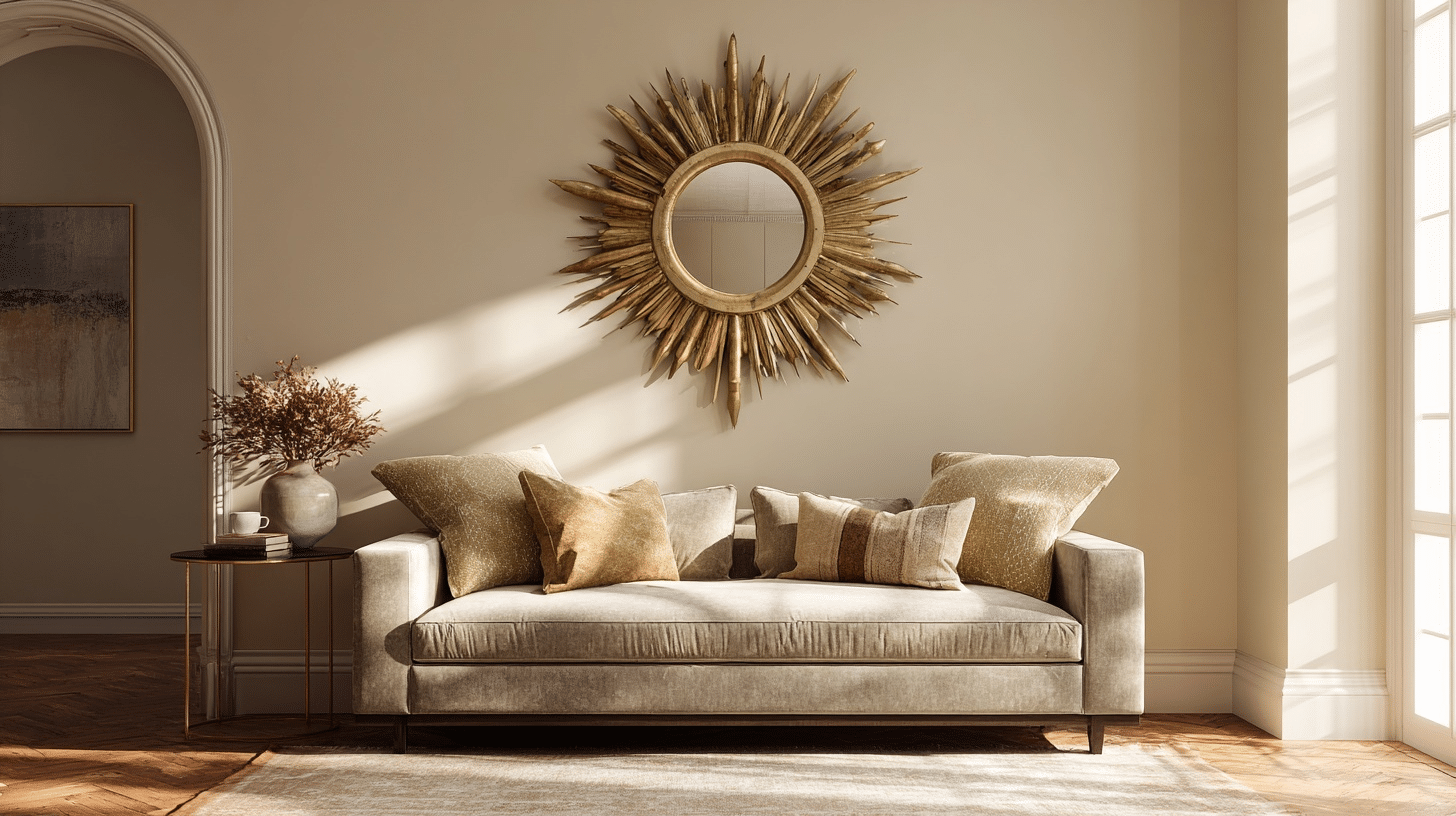
Mix a glamorous Art Deco mirror or bar cart with cozy, lived-in seating. The luxury elements add complexity without making the space feel stuffy. Comfort remains the priority.
7. Pair Scandinavian Simplicity with Global Accents
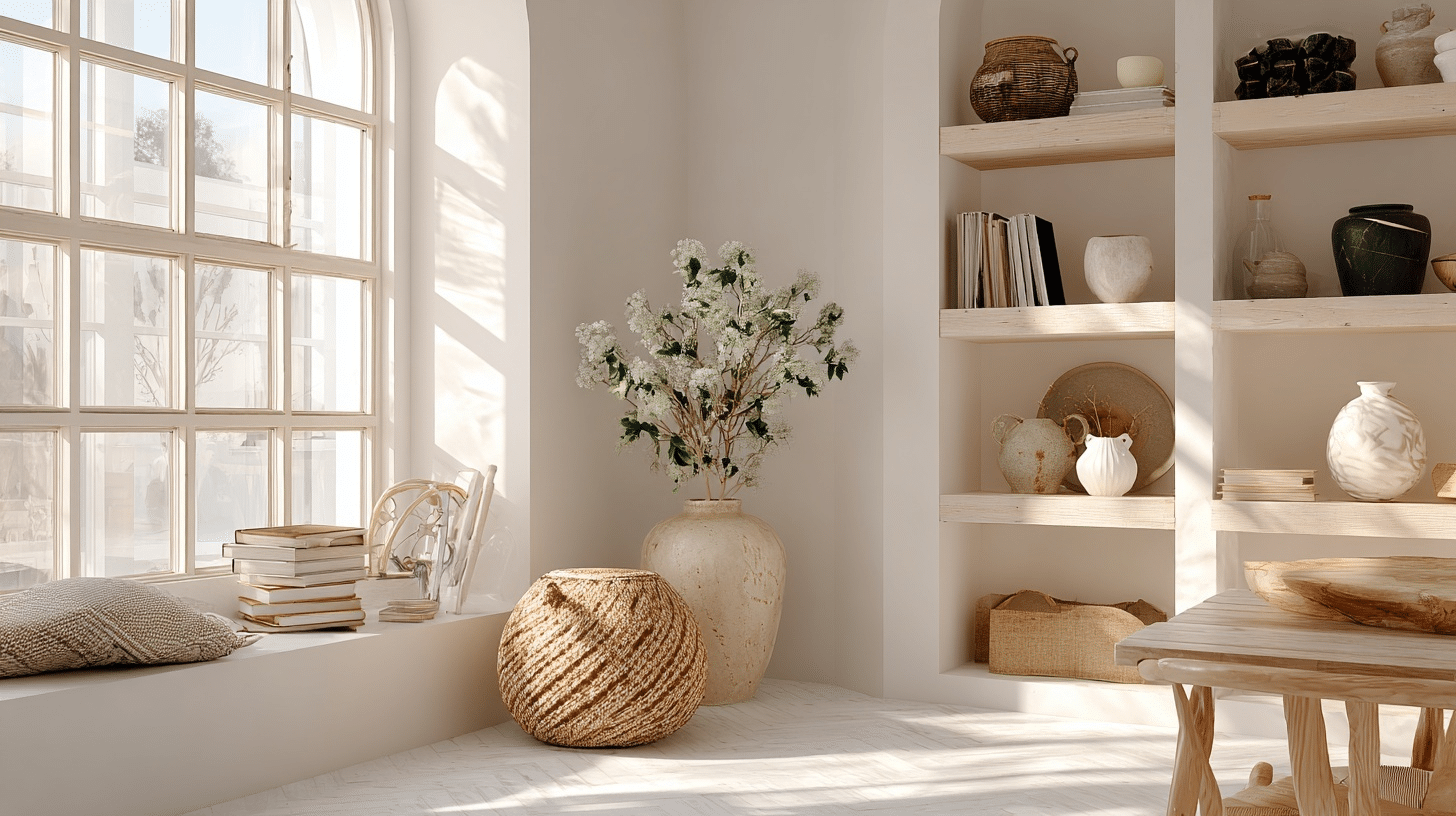
Start with a neutral Scandinavian base of whites and light woods. Then add global textiles, baskets, or pottery from different cultures. The simplicity lets each accent piece stand out.
8. Mix French Provincial with Modern Geometry
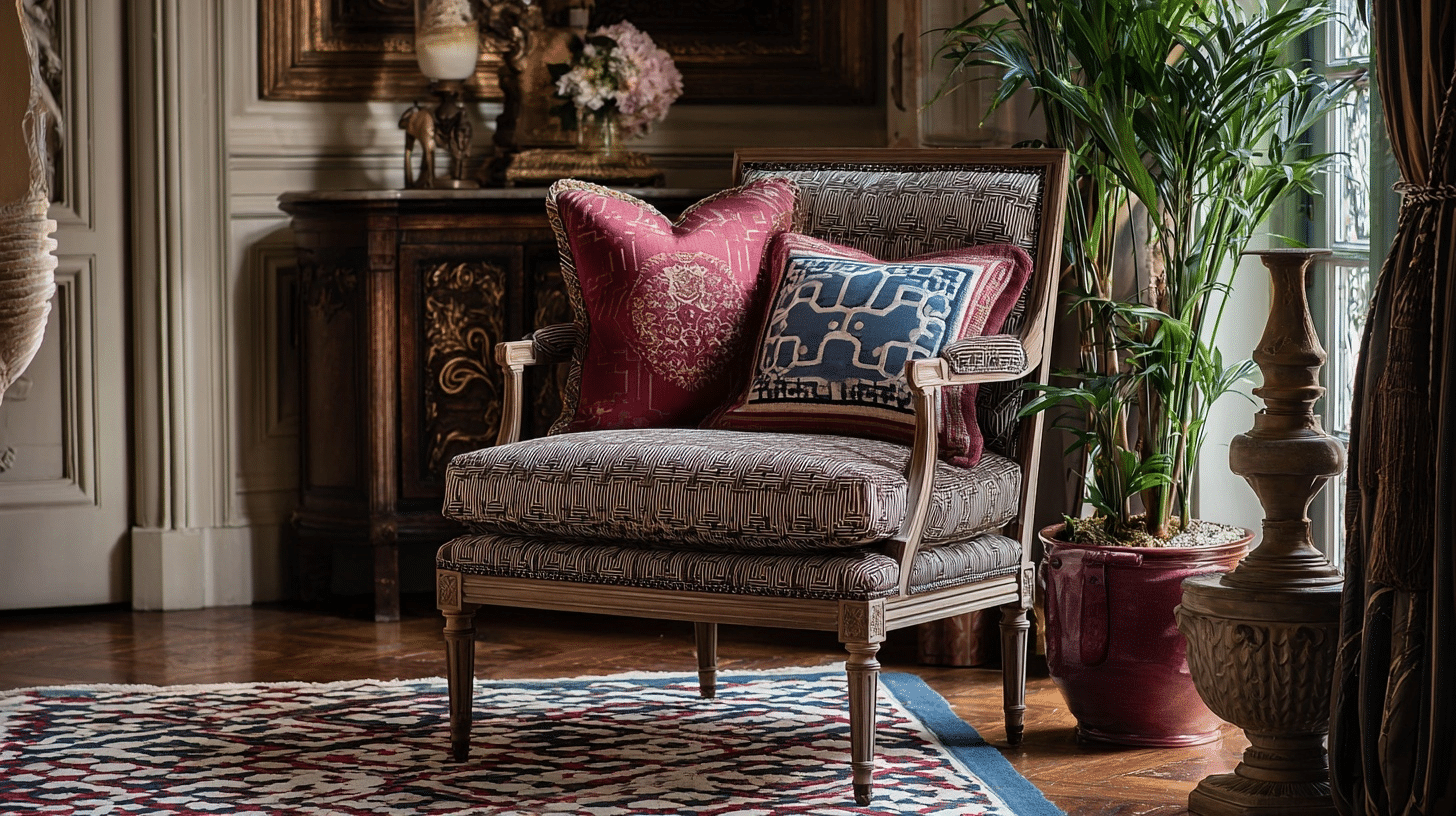
Combine ornate French furniture with geometric rugs or pillows for a stylish look. The curves of provincial style balance the sharp lines of modern patterns. This creates an unexpected but pleasing tension.
9. Blend Coastal Elements with Urban Edge
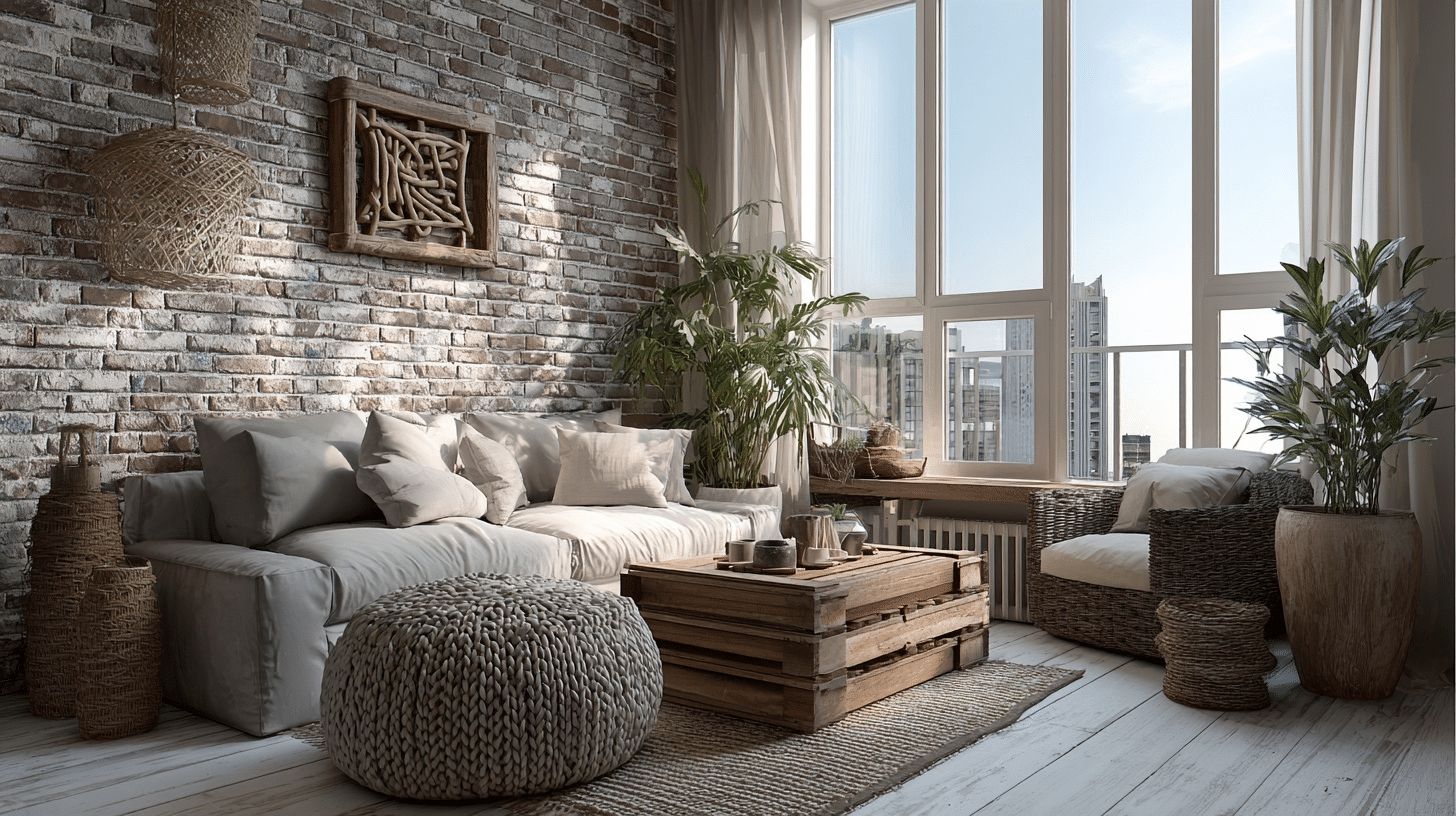
Bring together natural beach materials, such as rope or driftwood, with urban elements like concrete or brick. The relaxed coastal vibe softens the complex urban textures. This works especially well in city apartments.
Color & Pattern Play
10. Layer Multiple Pattern Scales
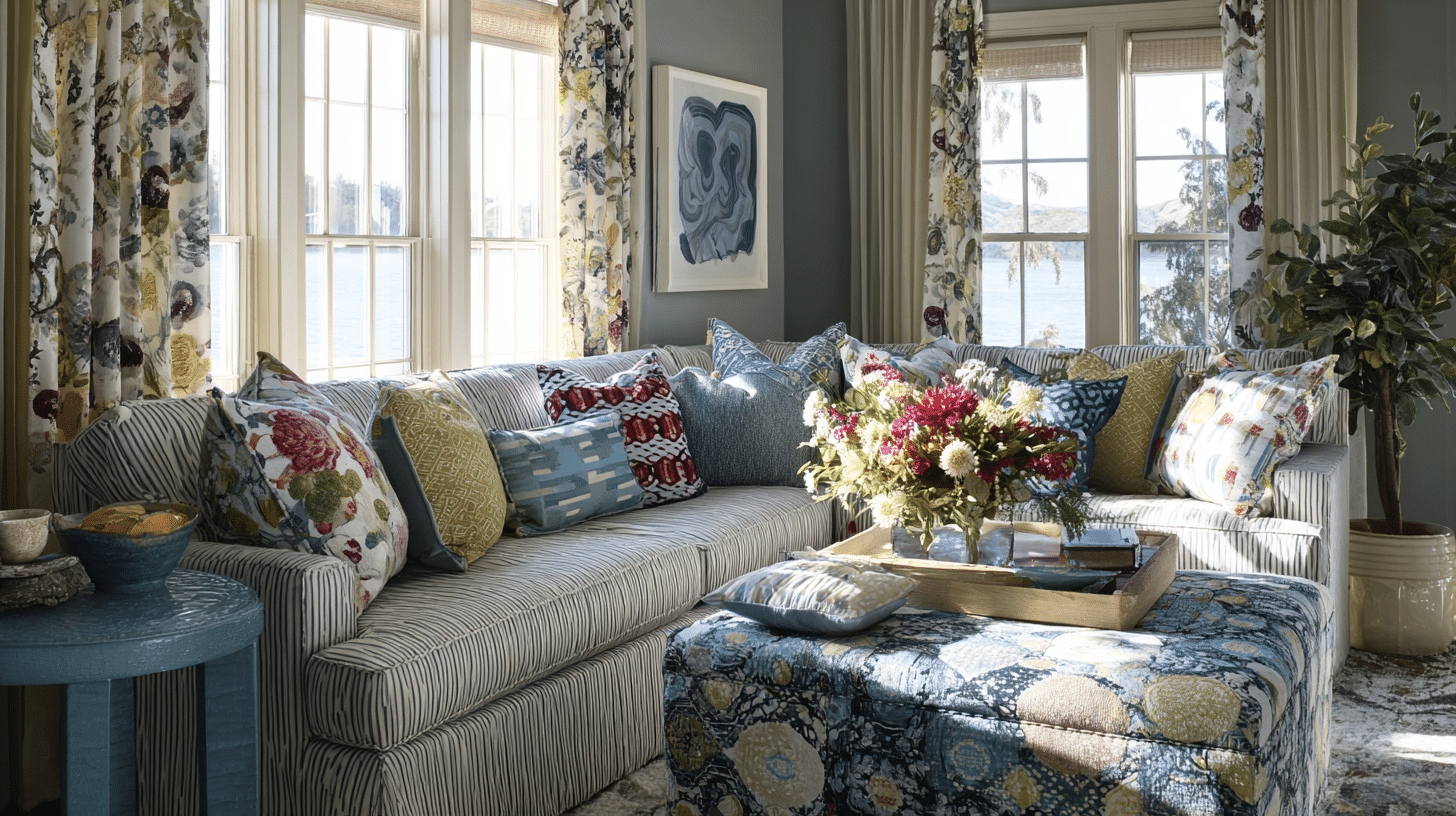
Mix large-scale florals with small geometric prints and medium-sized stripes. Keep the color palette consistent across patterns. This creates rhythm without chaos.
11. Use a Bold Color as the Thread
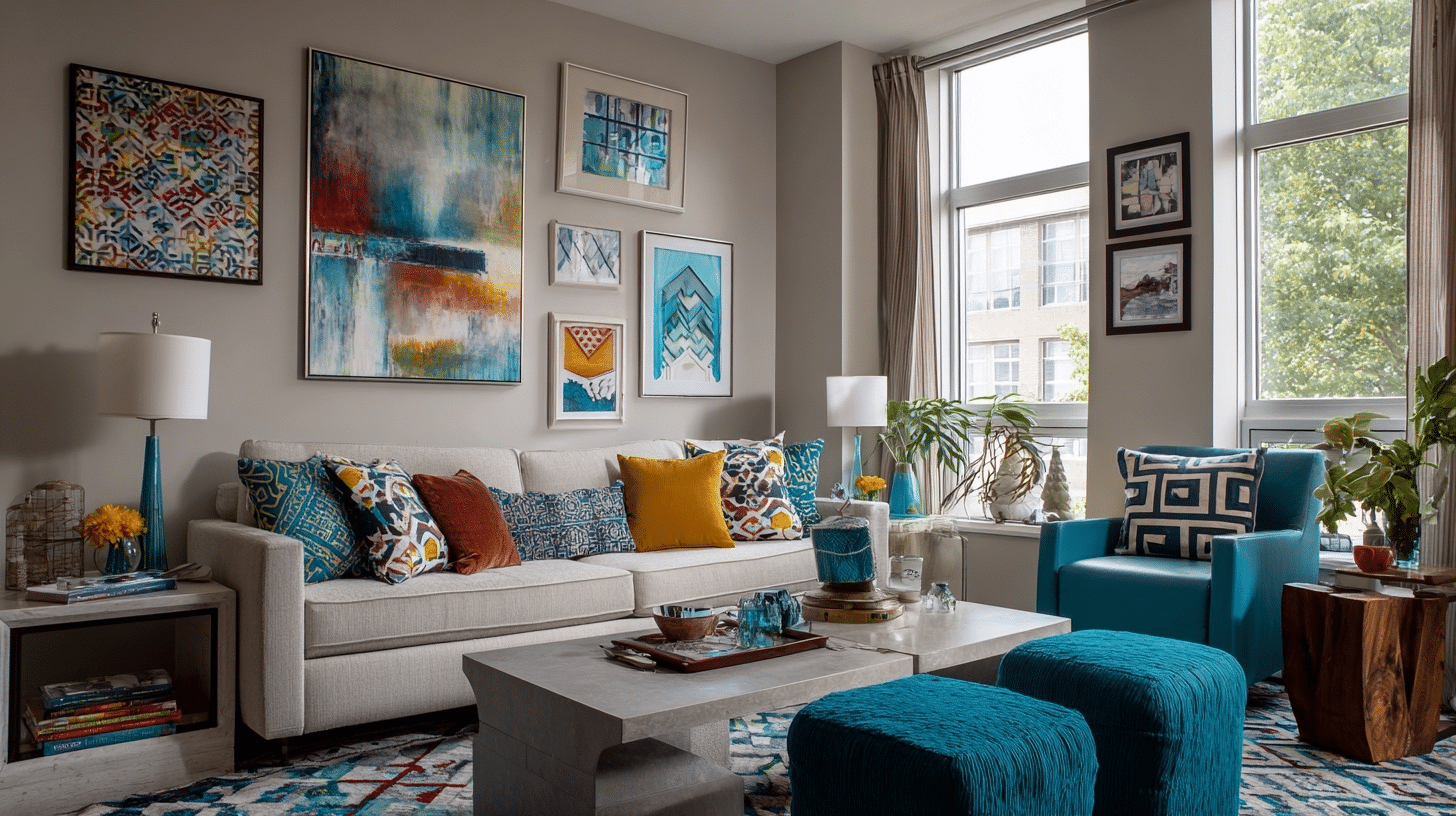
Select one vibrant color, such as mustard or teal, and repeat it in various shades throughout the room. Let it appear in art, on pillows, and in small decorative items. This ties disparate elements together.
12. Create Contrast with Neutrals and Brights
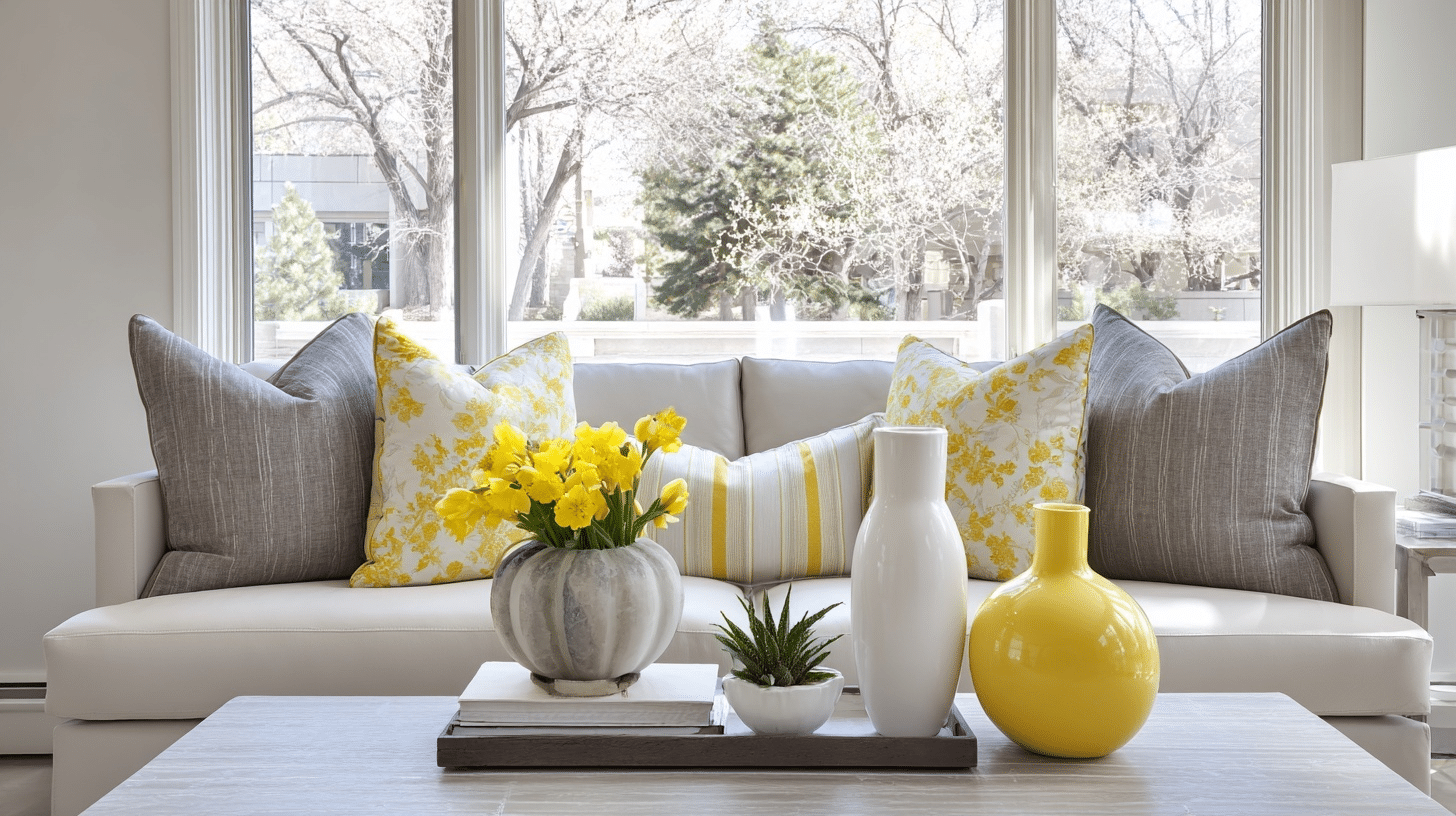
Base the room in neutral tones, such as beige, gray, or cream. Then punctuate with bright accent colors in specific spots. The neutrals let the bright colors pop.
13. Mix Cozy and Cool Tones
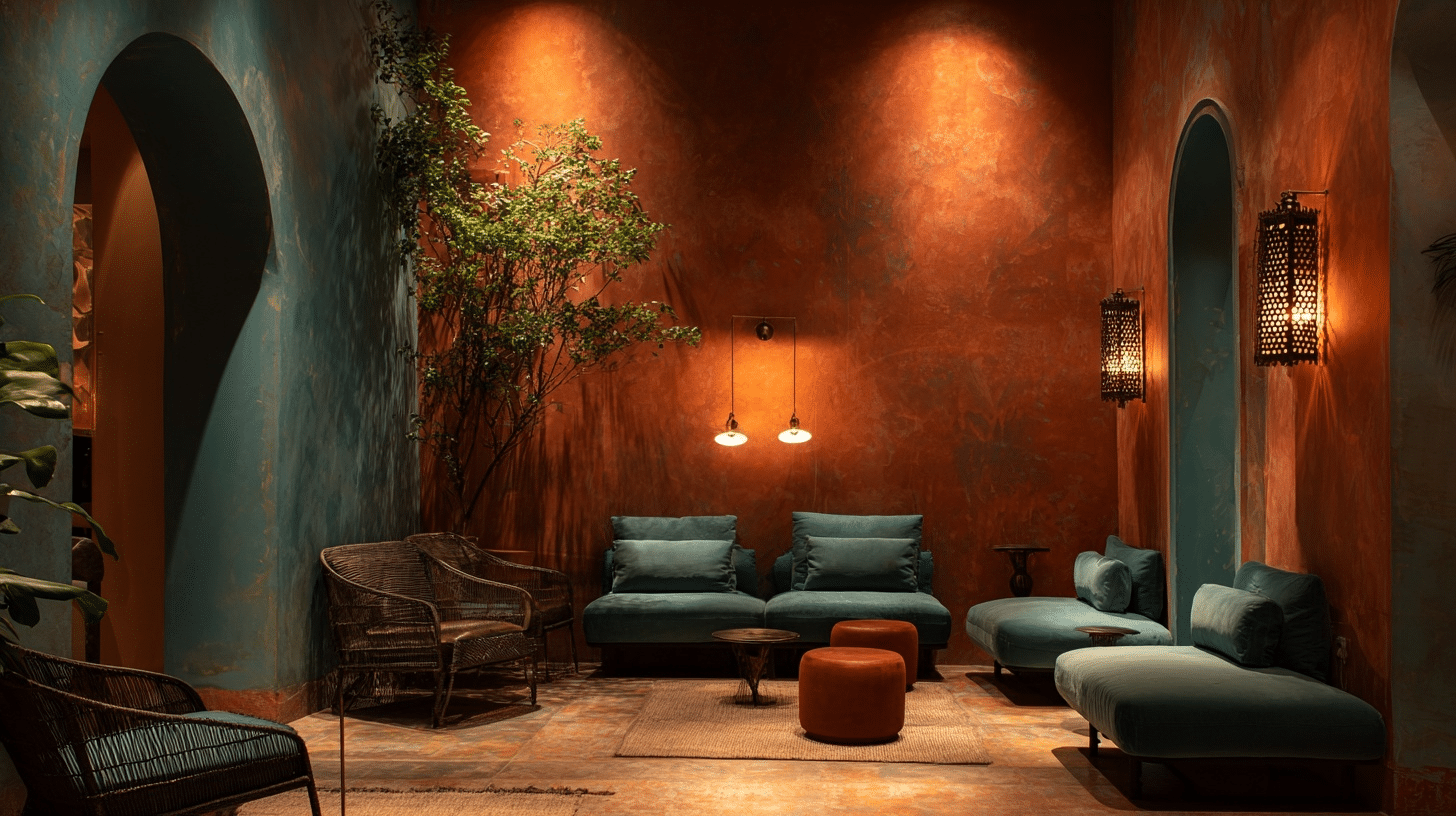
Combine cozy oranges or terracottas with cool blues or greens. This temperature contrast adds energy to the space. It prevents the room from feeling flat.
14. Play with Monochrome Plus One
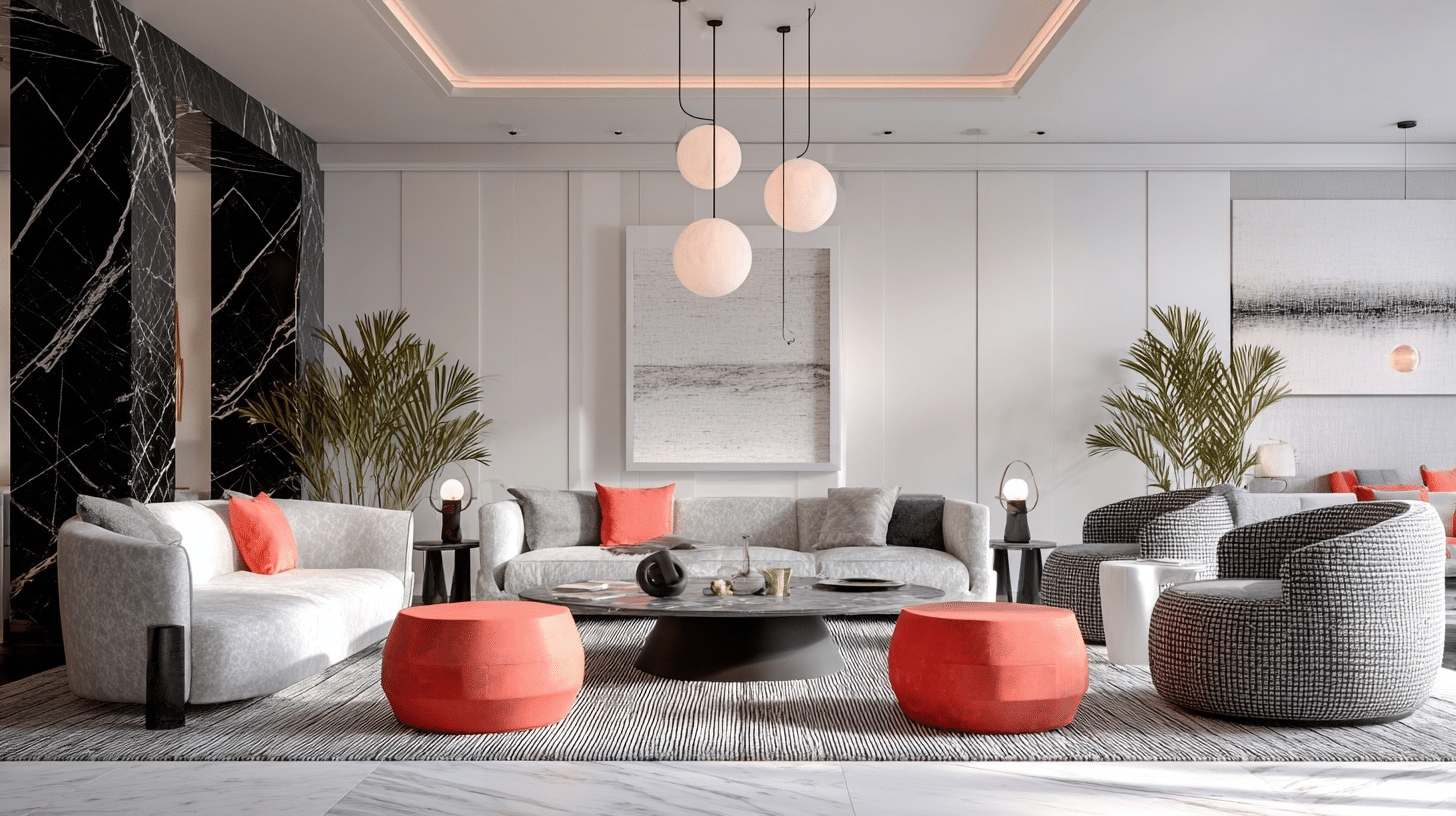
Start with a black and white or gray base. Add one unexpected color, such as coral or emerald, to various items. This keeps things simple yet interesting.
15. Blend Ethnic Prints from Different Cultures
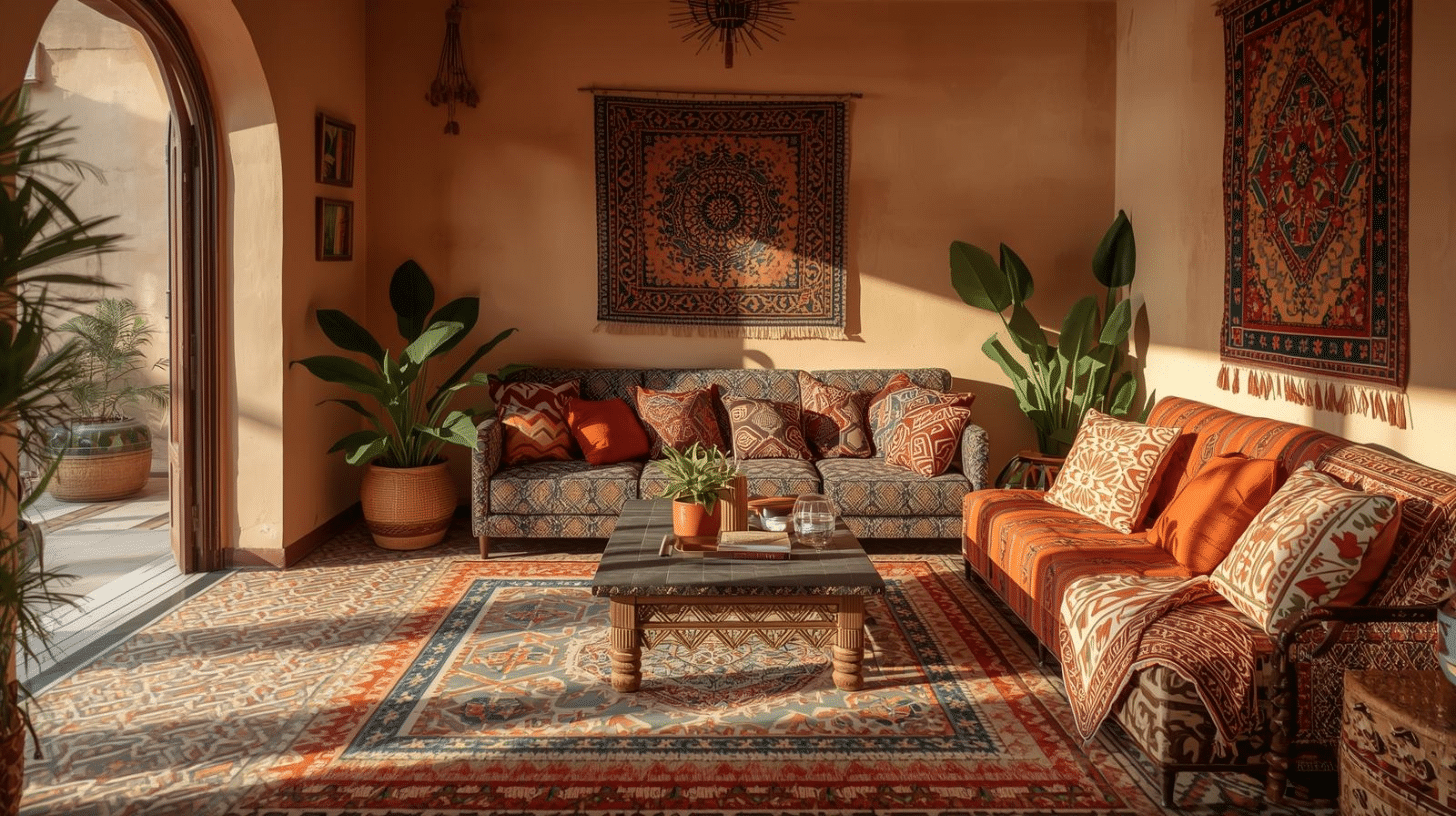
Mix Moroccan tiles with Indian block prints and African mudcloth. Keep the background simple to let patterns shine. This celebrates global design without being over the top.
16. Use Ombre or Gradient Effects
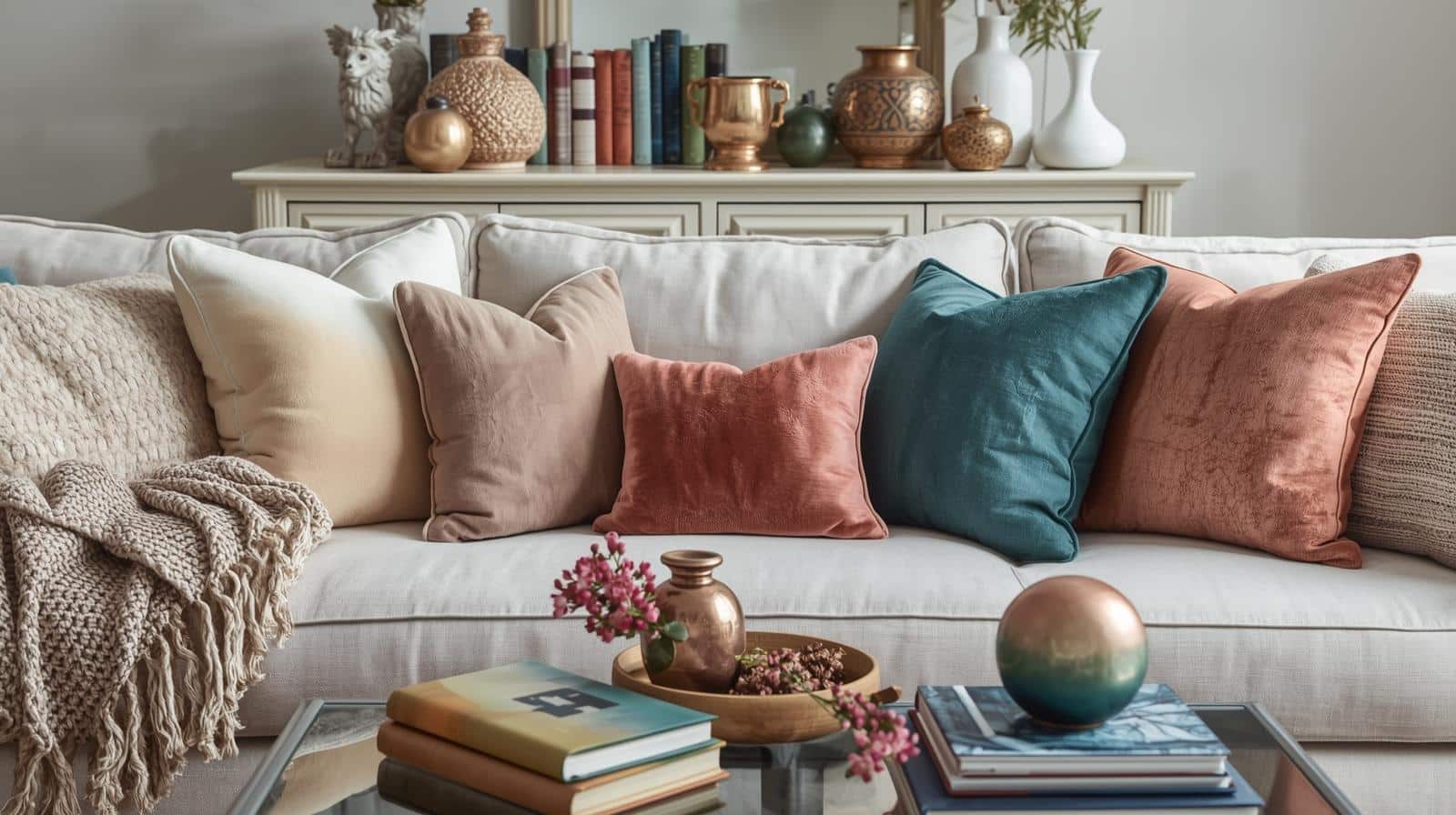
Arrange pillows, books, or decor in an ombre color scheme, progressing from light to dark. This creates a calming flow. It adds visual interest in a subtle way.
17. Mix Matte and Glossy Finishes
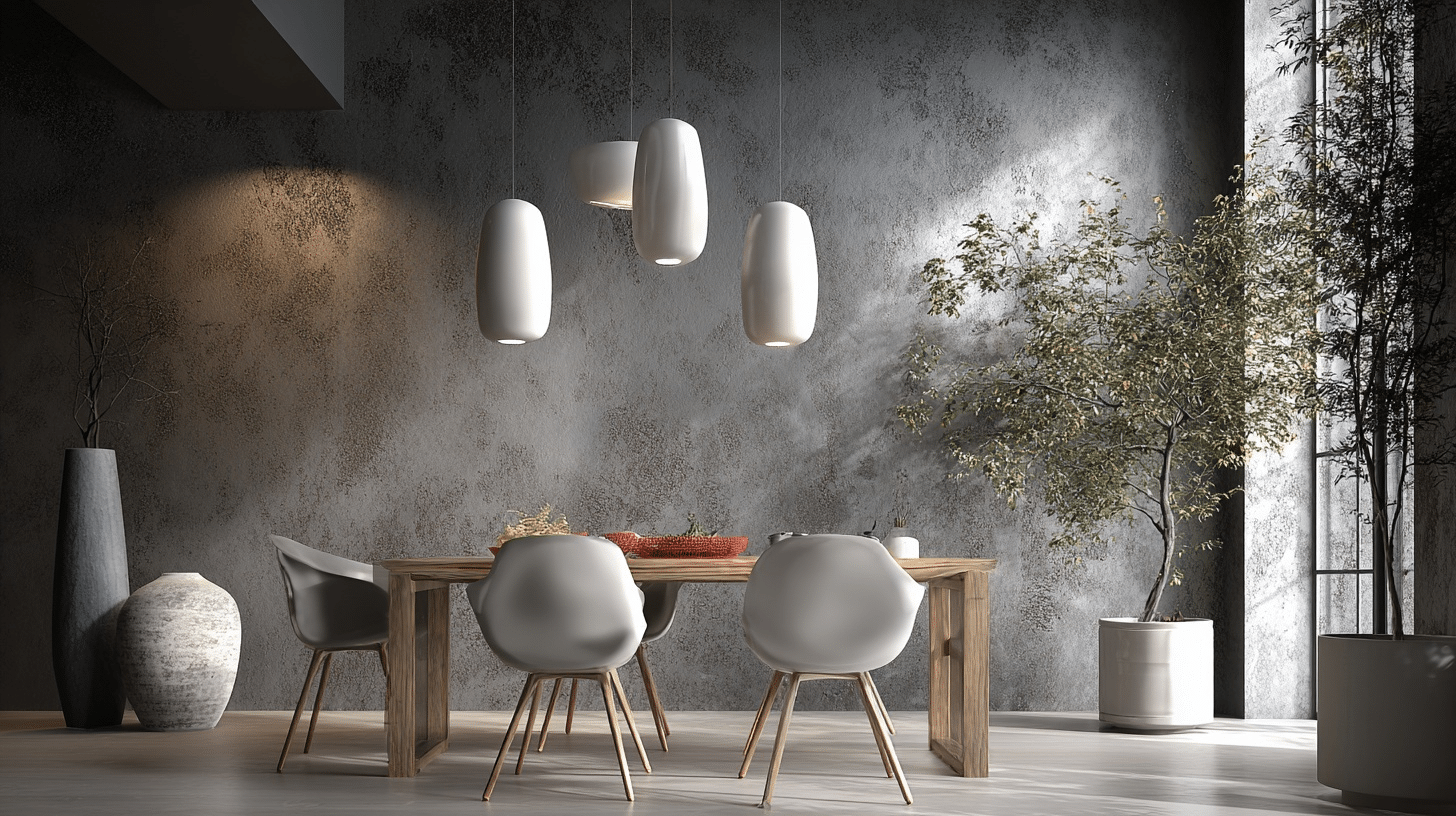
Pair matte paint or fabrics with glossy ceramics or lacquered furniture for a striking contrast. The different finishes catch light in varied ways. This adds dimension to your color choices.
18. Create Color Blocking with Furniture
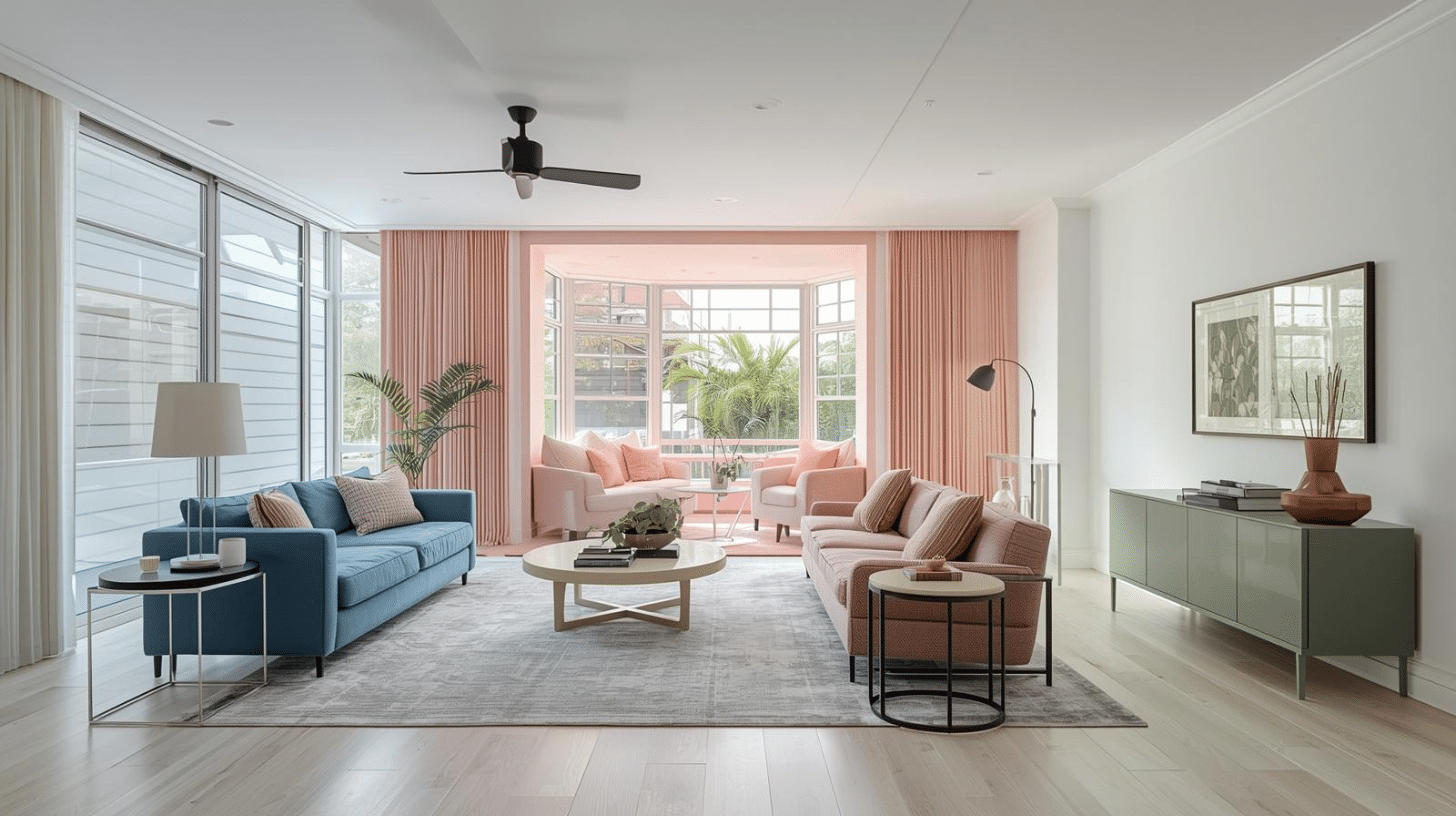
Group furniture by color zones: a blue corner, a pink area. Let each zone have its own personality. This works well in open-plan spaces.
Creating Zones & Furniture Layouts
19. Define Areas with Rugs
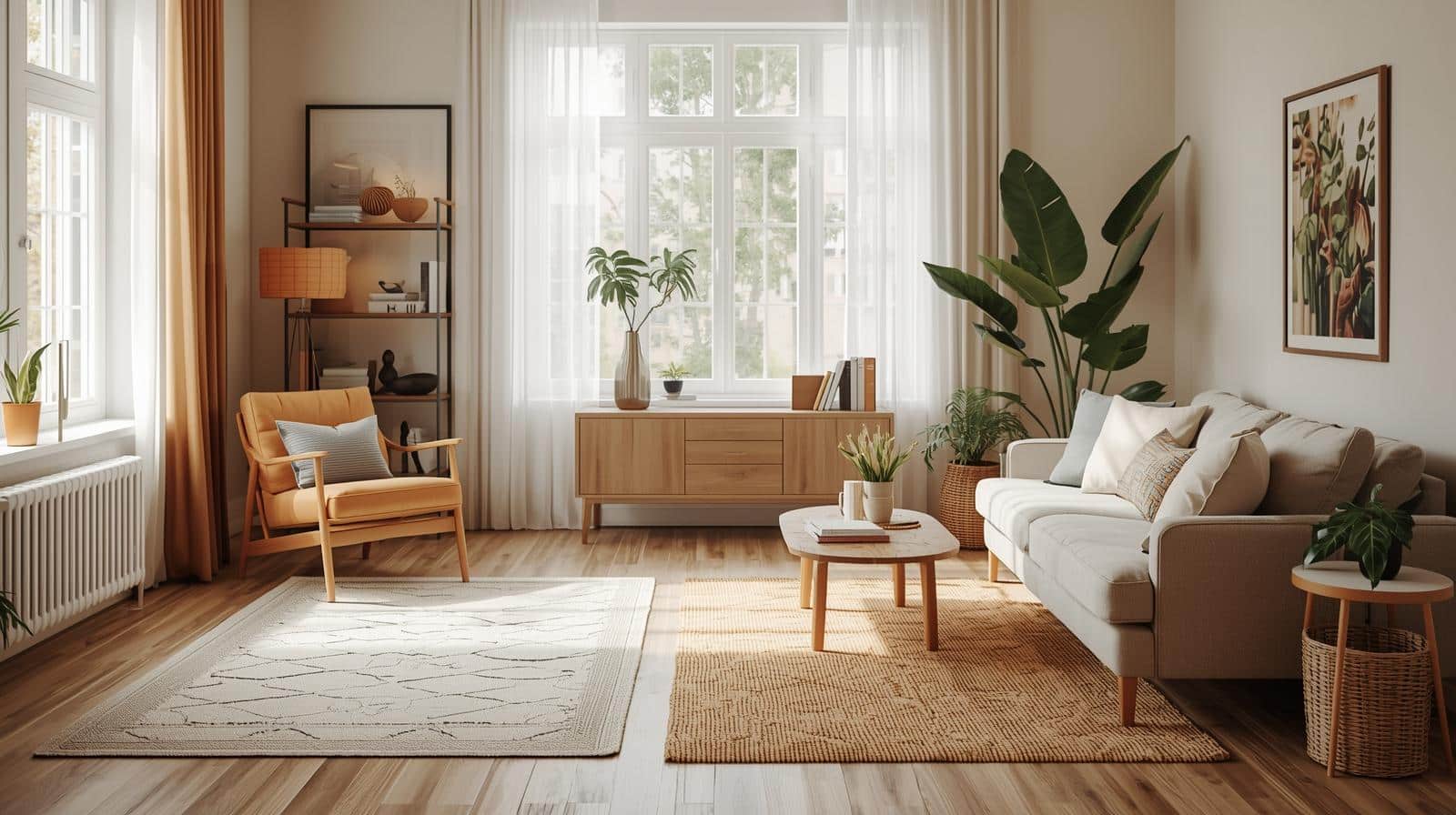
Use different rugs to designate separate zones, such as reading nooks or conversation areas. Each rug can have its own style while sharing common colors. This creates clear boundaries without walls.
20. Float Furniture Away from Walls
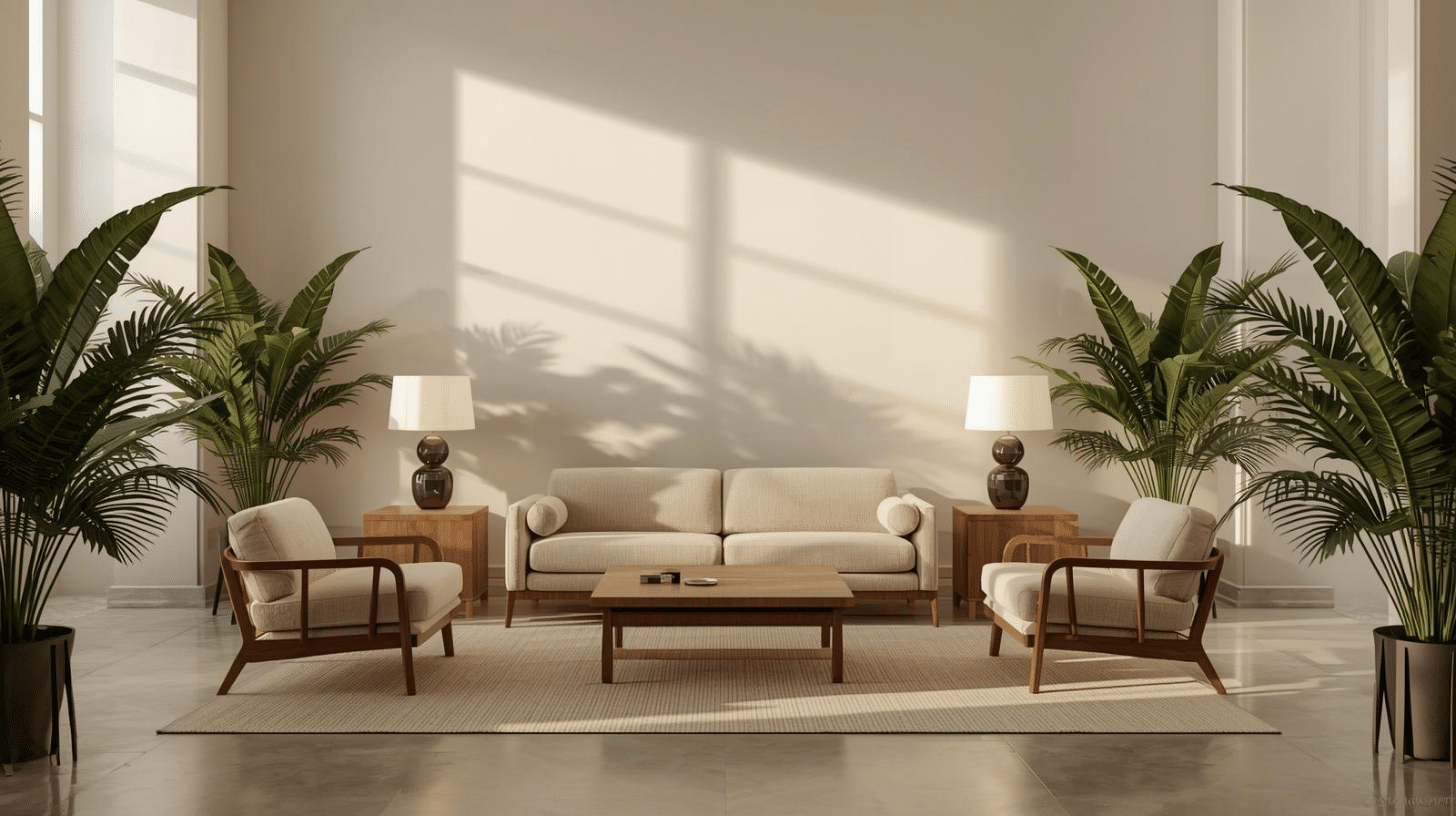
Pull sofas and chairs into the center of the room to create intimate groupings. This opens up space behind furniture for plants or lamps. It makes large rooms feel cozier.
21. Use Bookcases as Room Dividers
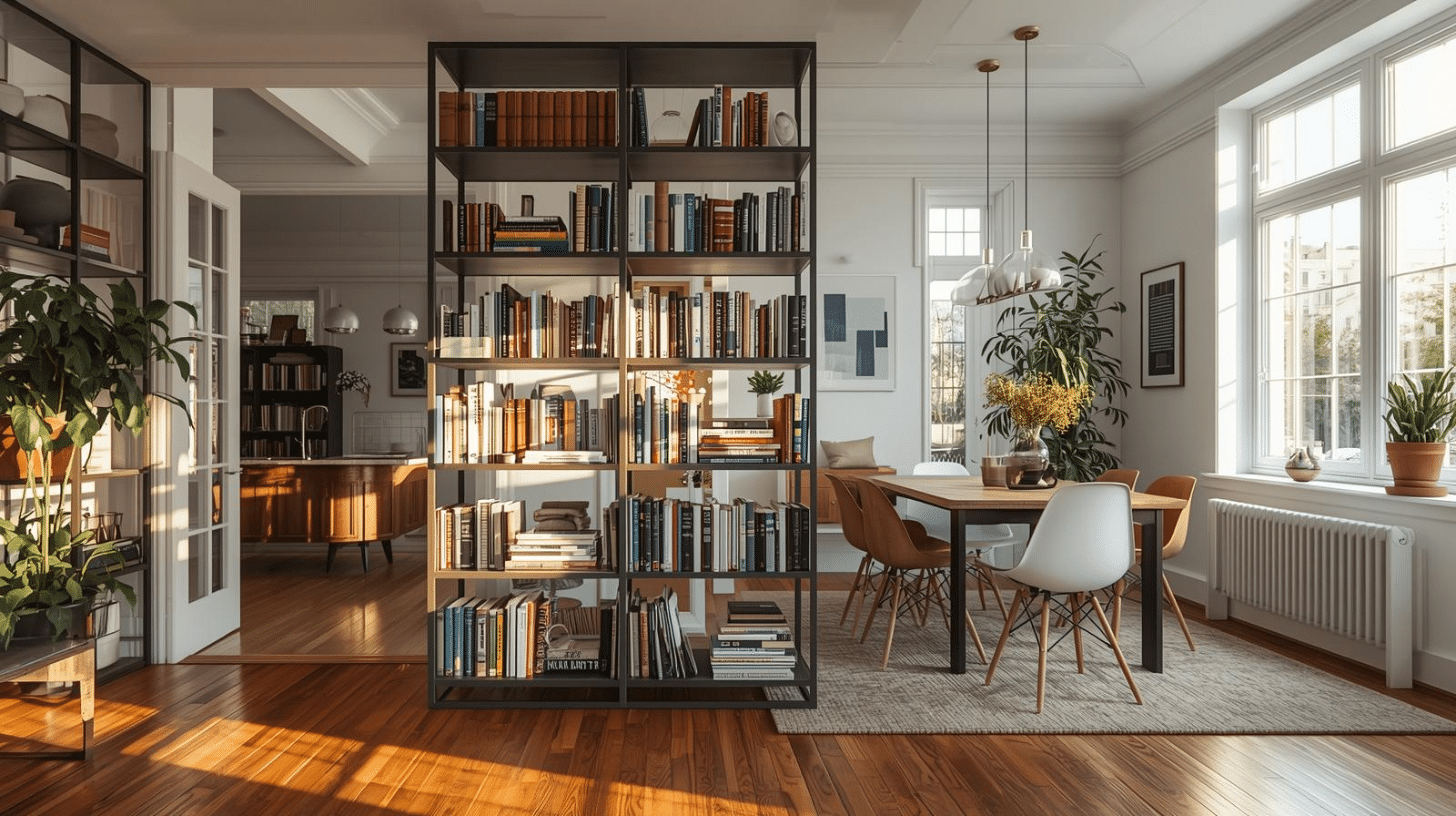
Place open shelving units perpendicular to walls to separate spaces. Fill them with books and decor that can be viewed from both sides. This adds storage while defining zones.
22. Create a Conversation Pit Layout
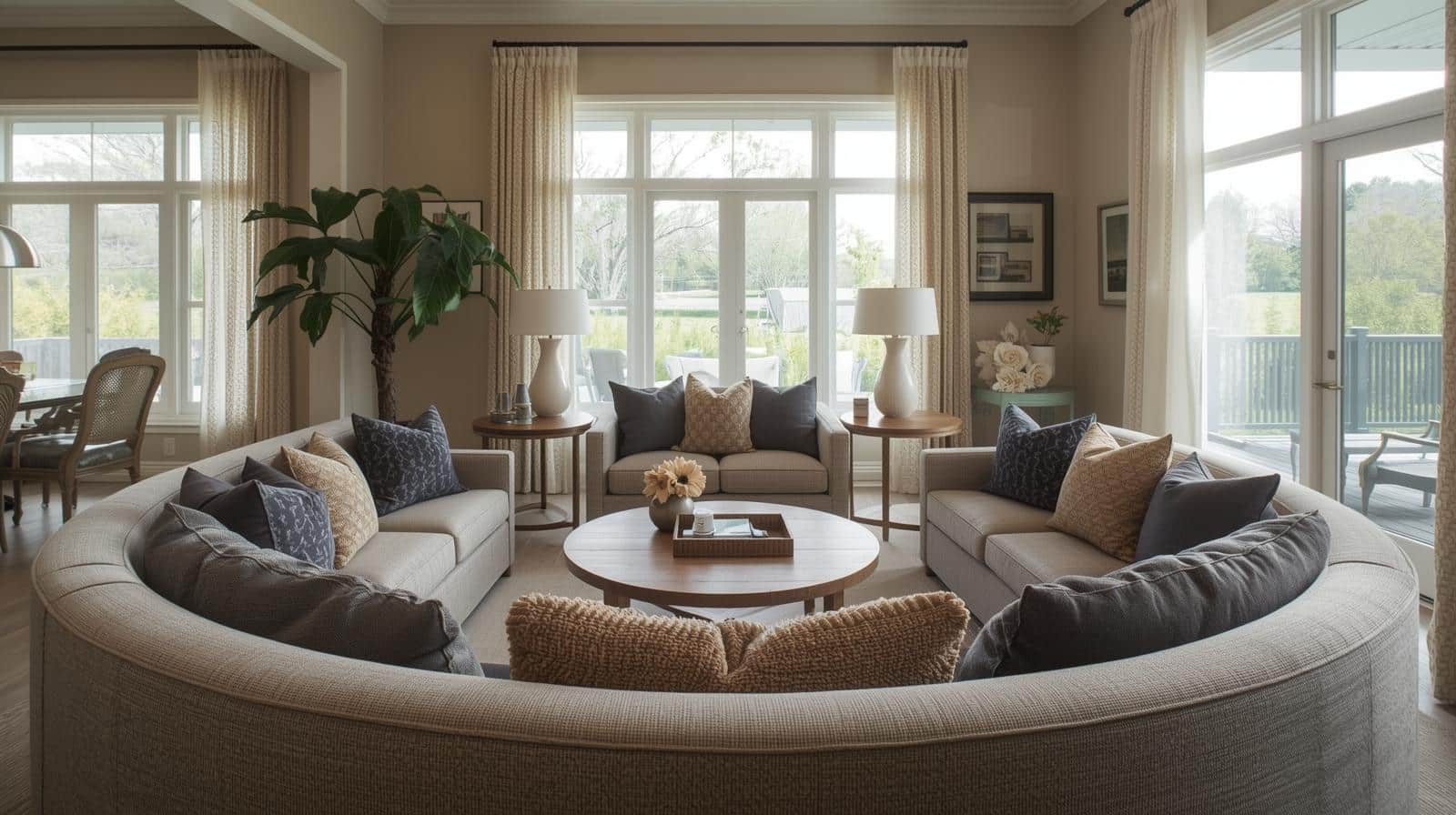
Arrange seating in a circular or U-shape facing inward. This encourages interaction and makes everyone feel included. Add a central coffee table to anchor the setup.
23. Layer Seating Heights
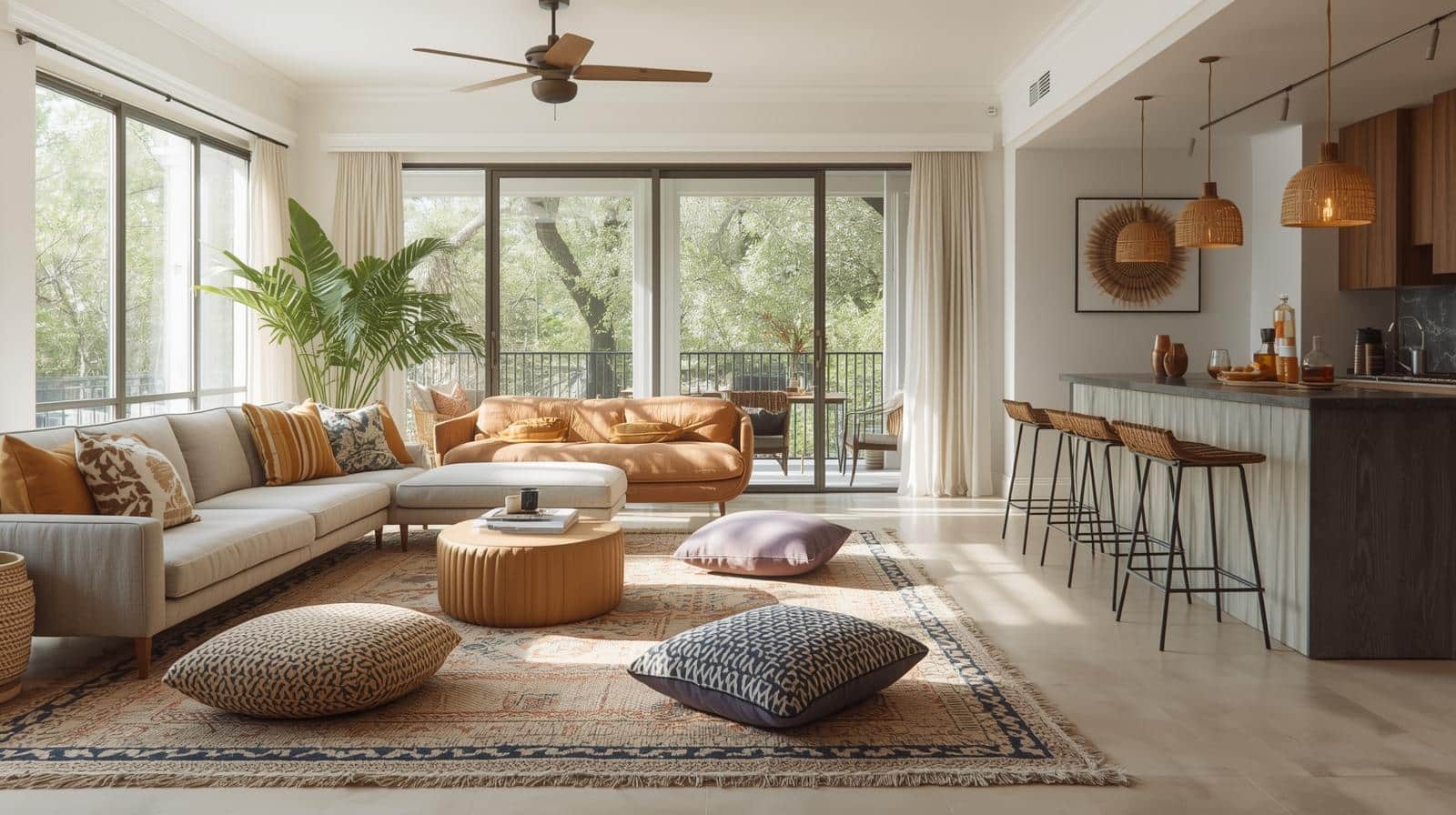
Mix standard sofas with low floor cushions and high bar stools. The varied heights add visual interest and flexibility. Different people can choose their comfort level.
24. Build a Window Seat Reading Zone
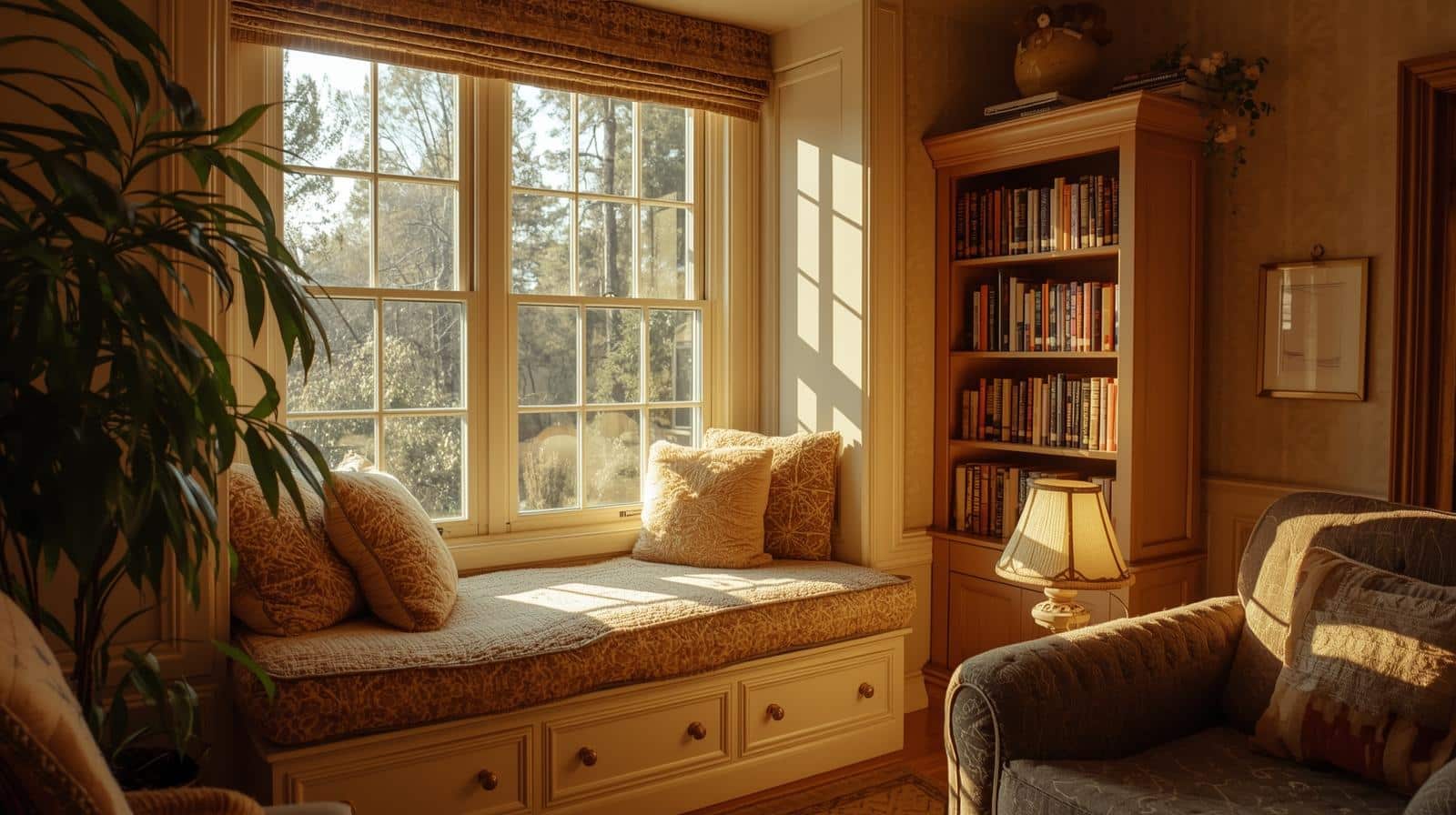
Add cushions and pillows to window ledges or build a small bench. This creates a dedicated quiet spot. It maximizes natural light for reading.
25. Use Screens or Curtains as Flexible Dividers
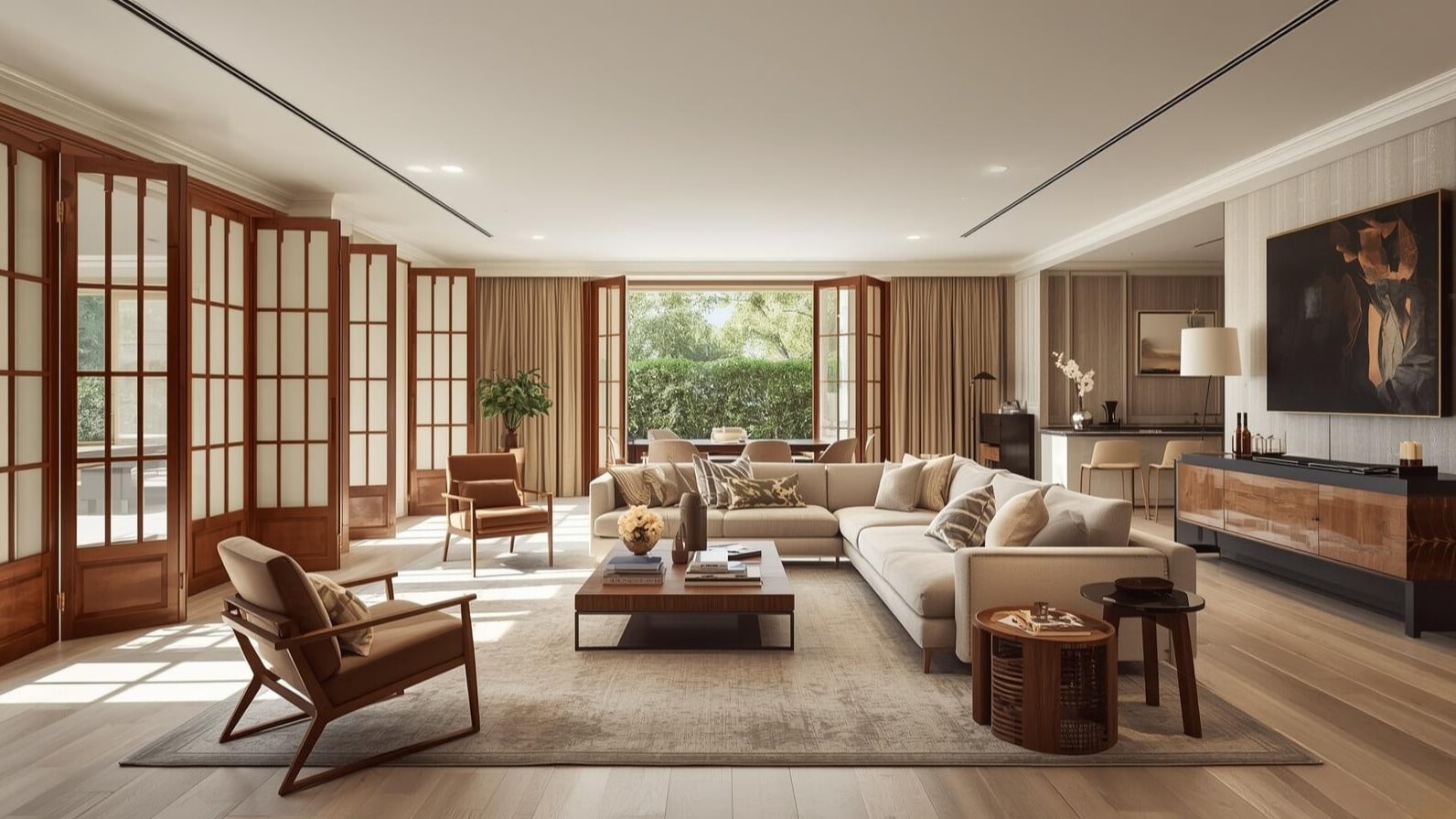
Hang fabric panels or folding screens to separate areas when needed. They’re easy to move or remove. This gives you control over openness.
26. Create an Entryway Zone in Open Layouts
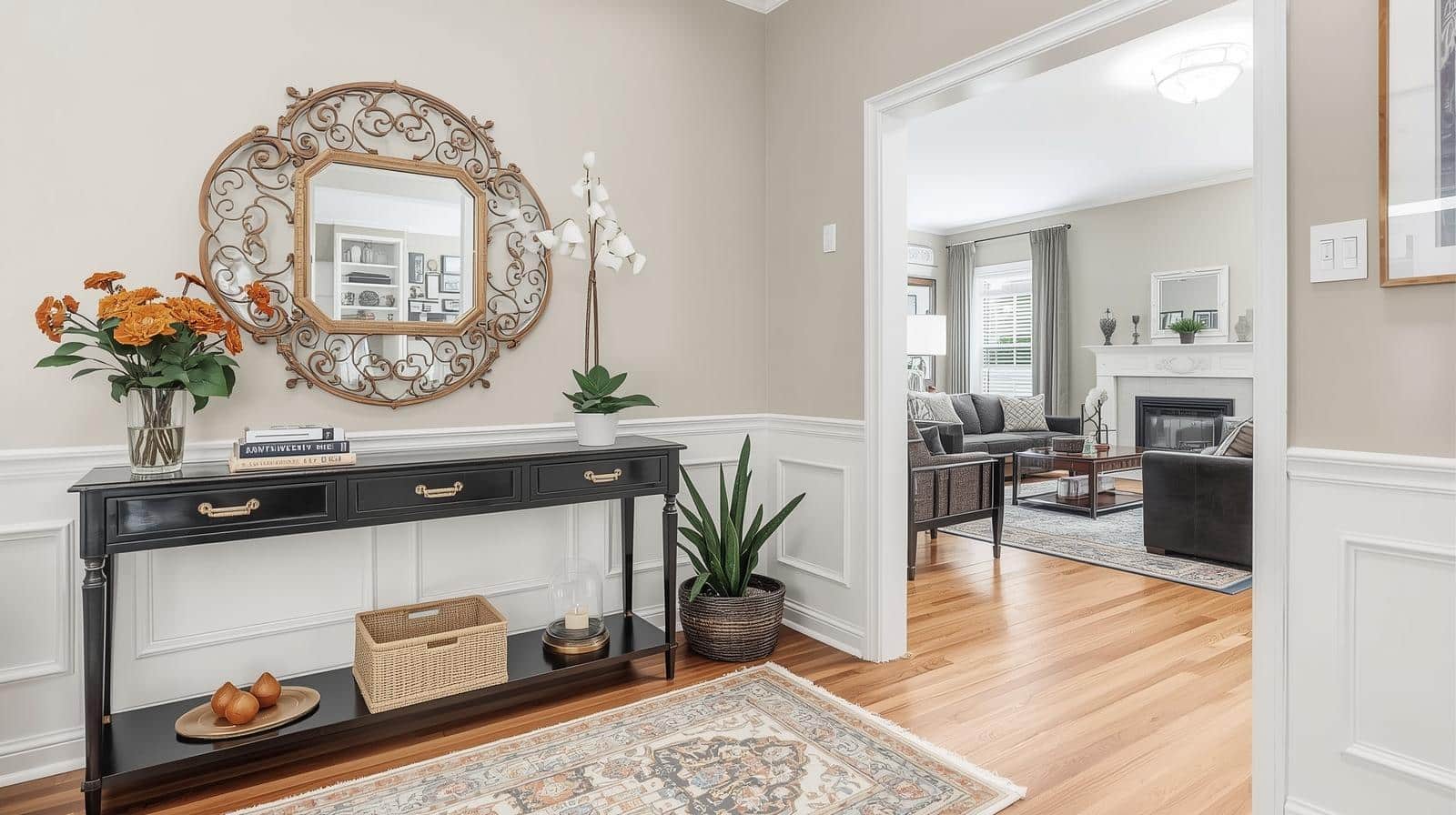
Use a console table, a mirror, and a small rug near the door. This defines where the living room actually starts. It adds function in homes without formal entryways.
27. Angle Furniture for Visual Interest
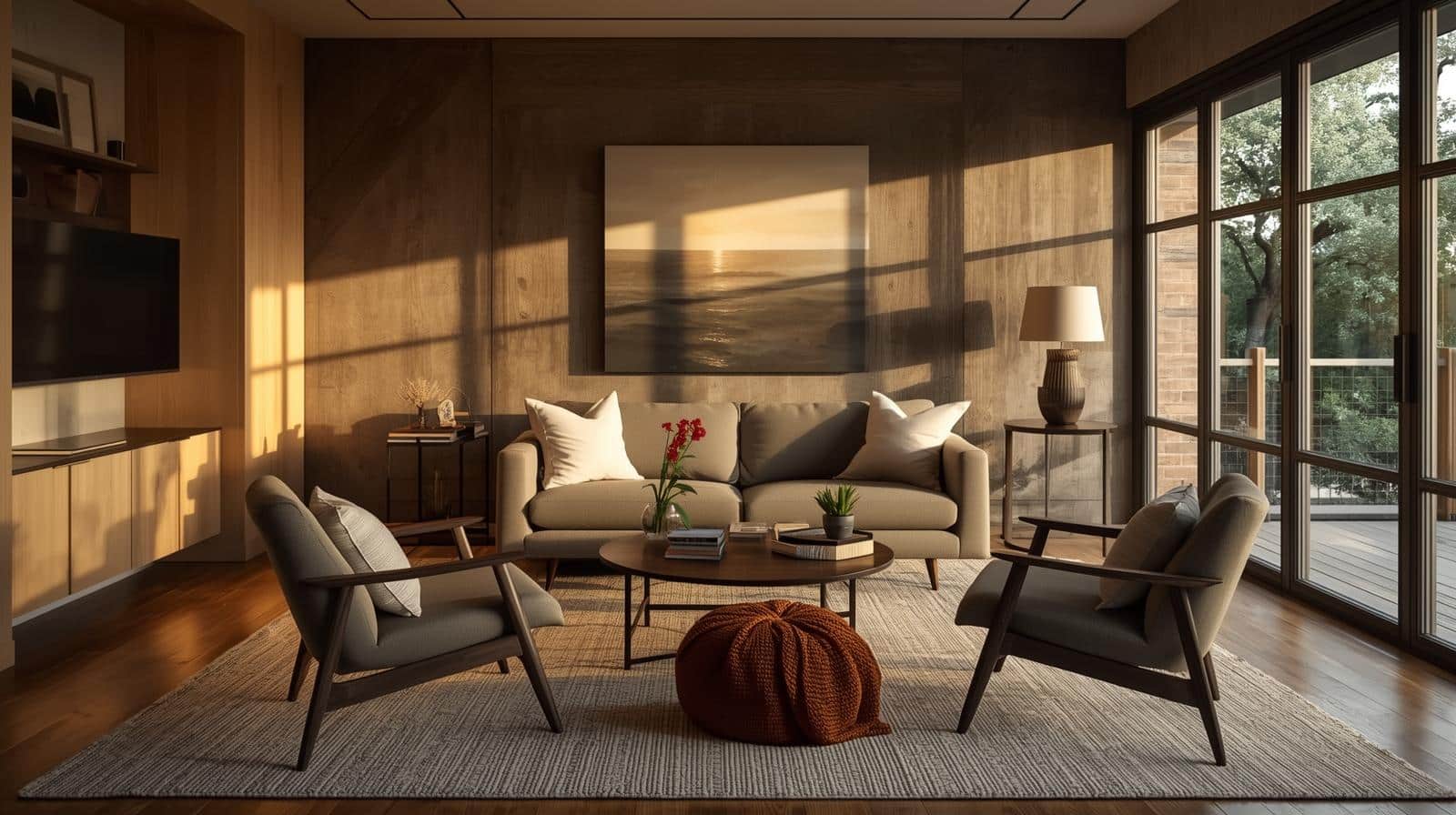
Place chairs or tables at slight angles instead of parallel to the walls. This breaks up rigid layouts. It makes the space feel more relaxed and lived-in.
The Secret Formula Behind Every Electric Space
Every striking eclectic room follows a simple formula. It begins with selecting one anchor piece, a bold sofa, a vintage rug, or a statement art piece.
From there, the design builds naturally:
- Pick 2-3 colors from the anchor piece and repeat them in pillows, throws, and accessories
- Mix textures like smooth leather with soft velvet, or wood with metal
- Balance old and new by placing modern items next to vintage finds
This approach creates visual interest without feeling cluttered. The key is to let each piece complement the others while maintaining its own unique character.
Bring Your Vision to Life
So there you have it: your roadmap to creating a chic, eclectic living room.
Remember, this style isn’t about perfection. It’s about mixing pieces you love in ways that feel right to you.
Start small. Pick one idea from this guide and try it out. Maybe it’s mixing two patterns or floating your sofa away from the wall.
See how it feels. Your living room should tell your story. Don’t be afraid to experiment and adjust as you go.
Which idea did you like the most?

